A Self-Guided Walking Tour in Old Town Vienna (With a Map)
WanderInEurope is reader-supported. Affiliate links and ads help us keep creating useful content for you.
Wanderers can’t afford to miss the historic centers of beautiful cities, especially if they were the capitals of once-great empires.
For example, Vienna. As the heart of the Habsburg Empire, it truly is a dream destination for those who deeply admire breathtaking architecture.
After exploring its Old Town, I can confidently say that it lives up to its reputation! I encountered numerous fascinating sights and impressive buildings. Stunning architecture greets you at every turn, and history permeates the air.
Within the Old Town, you’ll discover that there are more stunning palaces in the city besides the famous Hofburg Imperial Palace, Schönbrunn Palace, and Belvedere Palace. Other noteworthy heritage sites beyond the city’s most renowned, such as Stephansdom and Karlskirche, await. I bet you’ll also be equally impressed by its smaller churches, such as Peterskirche.
In the self-guided walking tour that I will share in this guide, you’ll encounter all the most visually impressive places I discovered in the Old Town.
I have included a map with a route to assist you in locating these landmarks and attractions in the Old Town as efficiently as possible.
Summary
- This tour is ideal for those who love to explore and take pictures.
- This walking tour of Old Town Vienna showcases a selection of the city’s architectural wonders (some with breathtaking frescoes), including the iconic sights along Ringstrasse and some little treasures of the historic center. Good to know, the route also encompasses prominent streets lined with excellent cafés.
- The tour is a loop, beginning and concluding at the Schottentor station, accessible by tram and subway. Heading clockwise, your initial point of interest is Schottenkirche. On the other hand, Votivkirche.
- The complete journey spans roughly 10 kilometers, translating to about 2 hours of walking. Plan for 4 to 5 hours, or half a day, to fully enjoy this walking tour, factoring in brief pauses, photo opportunities, and brief explorations of the landmarks that pique your interest.
- Based on the figures, you’ll find this walking tour quite demanding, particularly in the summer heat. Make sure to wear comfortable shoes since there’s plenty of ground to cover, and bring along a water bottle to stay hydrated. Despite the effort, it’s truly a fulfilling adventure. The photo ops spots alone are worth it!
See at this: Affordable Vienna Activities, All Under $100 (opens in a new tab)
Walking Tour Map + Route
Below is the map of Old Town Vienna. The locations marked in red represent the highlight of the walking tour, while those in yellow indicate other beautiful attractions and the hidden yet stunning spots waiting to be uncovered.

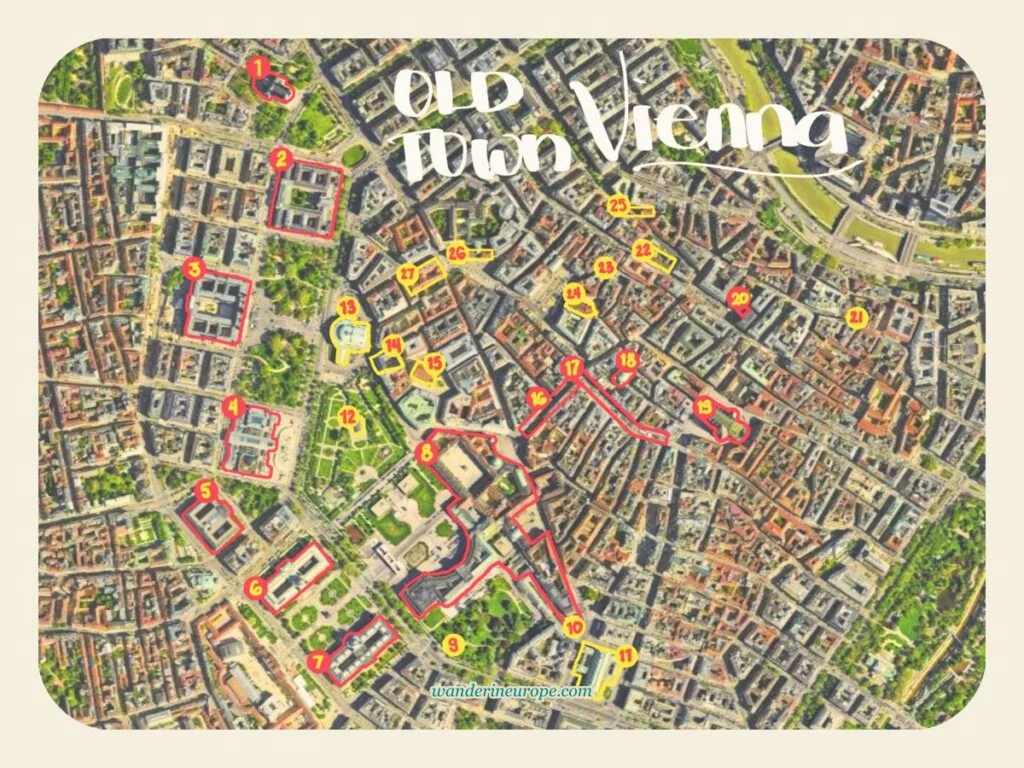

Legend: (1) Votivkirche (2) Vienna University (3) Rathaus or Vienna City Hall (4) Vienna Parliament (5) Justizpalast (6) Naturehistorisches Museum (7) Kunsthistorisches Museum (8) Hofburg (9) Mozart Monument (10) Albrechtsbrunnen (11) Vienna State Opera (12) Volksgarten & Theseustempel (13) Burgtheater (14) Stadtpalais Liechtenstein (15) Wiener Minoritenkirche (16) Kolmarkt (17) Graben (18) Peterskirche (19) Stephansdom (20) Ankeruhr (21) Holy Trinity Greek Orthodox Church (22) Altes Rathaus (23) Holocaust Memorial (24) Kirche am Hof (25) Maria am Gestade Catholic Church (26) Schottenkirche (27) Palais Daun-Kinsky
Good to know: If you’re short on time during your visit to Vienna and can’t cover everything on this walking tour, no worries! I’ve put together a condensed version that skips some sights, saving them for your next visit. If you choose this option, the walking tour will no longer be a loop. Depending on your starting point, the tour could begin at either the Votivkirche or the Ankeruhr.

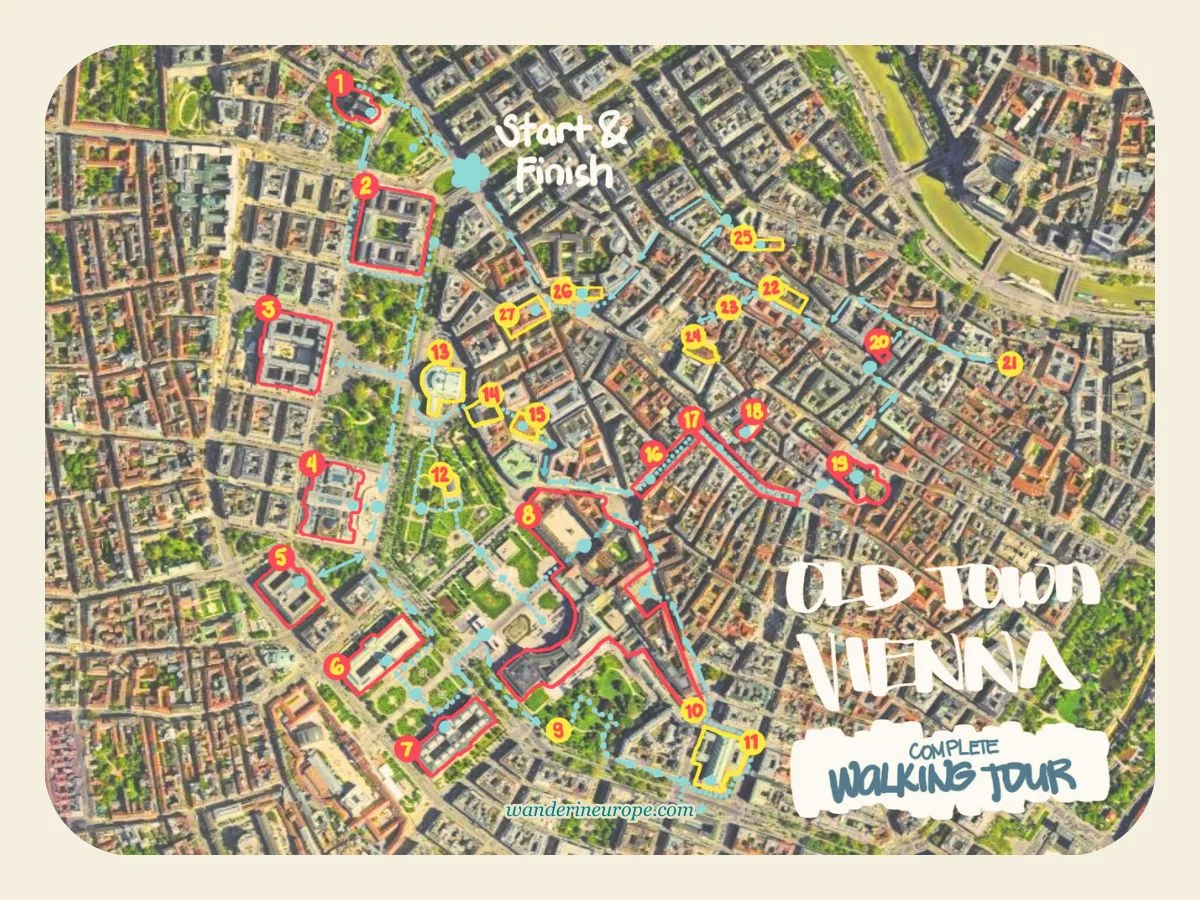

If you’re spending a few days in Vienna, I suggest taking the full tour. It’ll guide you to some of the city’s most impressive architecture, historic monuments, and Instagrammable spots—perfect places to snap a selfie as a keepsake.
I also suggest this for those traveling on a budget who want to fully experience Vienna. Except for the palaces and museums, many of the attractions on this route offer free entry.

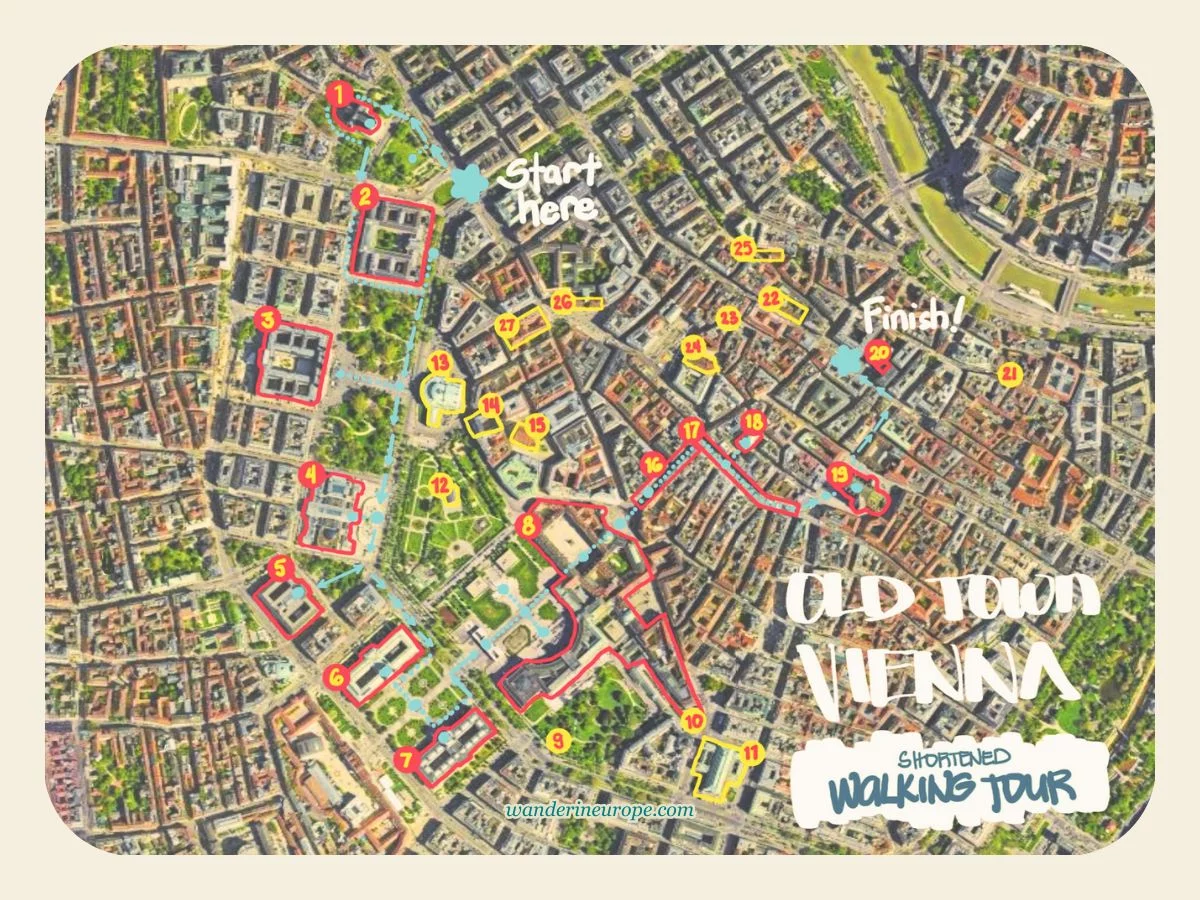

If you’re in Vienna just for a quick day trip from other cities in Europe, this shortened walking tour is perfect. It’s designed to let you soak in the architectural wonders of the Old Town and still save time for the city’s other sights and experiences. Technically, this is about half the length of the full tour. Plan for about 2 hours to complete it, although your actual time will vary based on your pace of sightseeing and exploration.
From great hotel deals to skip-the-line tickets and affordable eSim to cheap rentals, click here for the best hotel deals and more travel discounts.
A Glimpse to Every Stop
Allow the photos below to provide a glimpse of the stunning sights that await you on this walking tour. The order of the images corresponds to the sequence of stops on the tour. Click the name of the place to learn more about it.

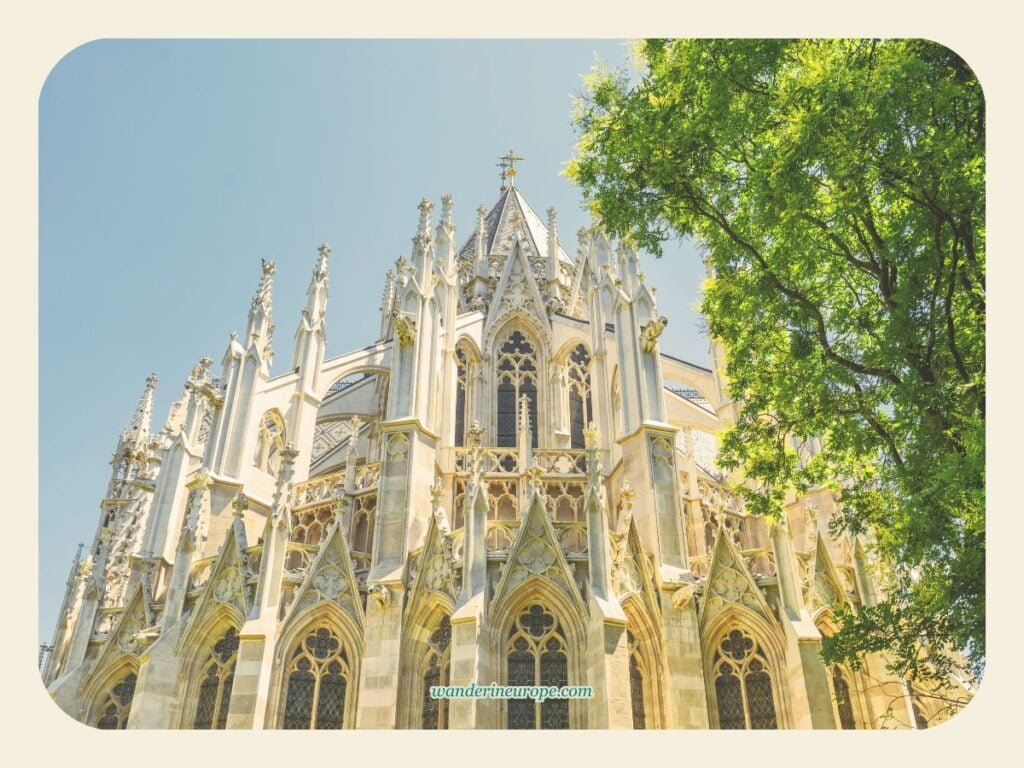
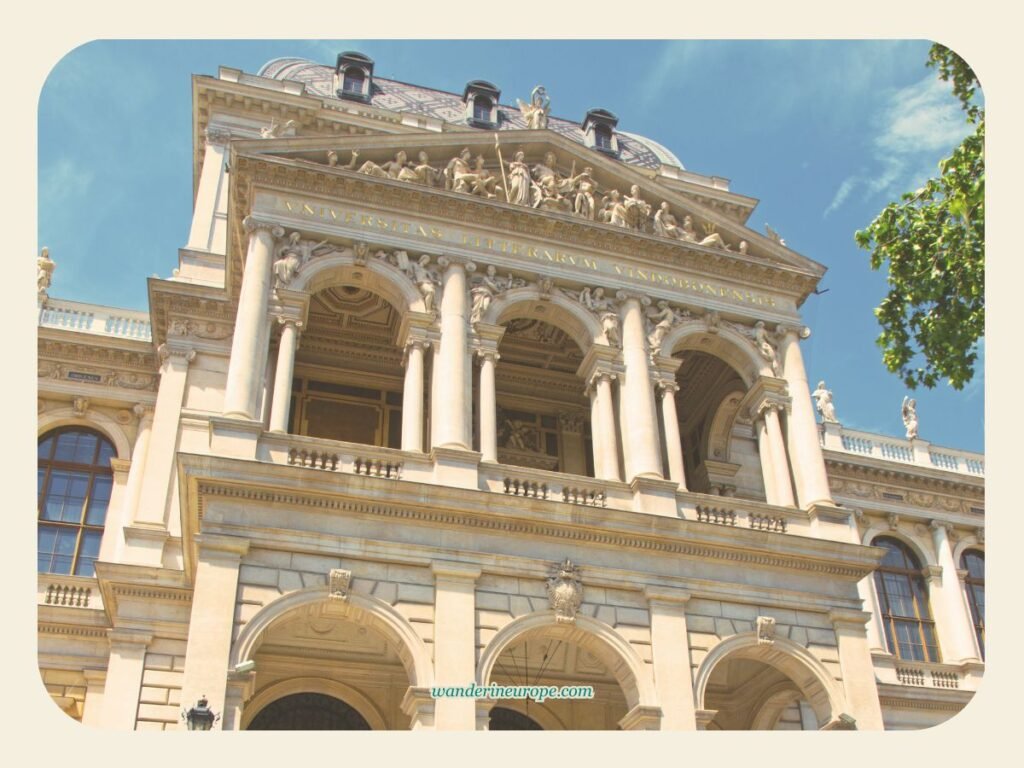
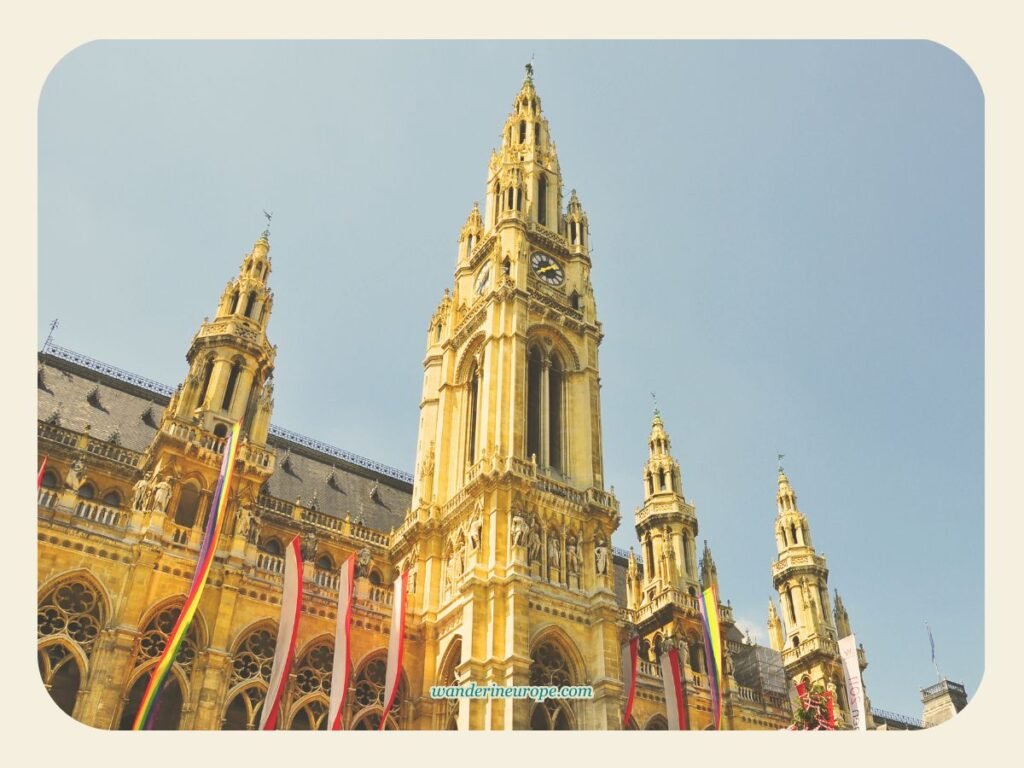
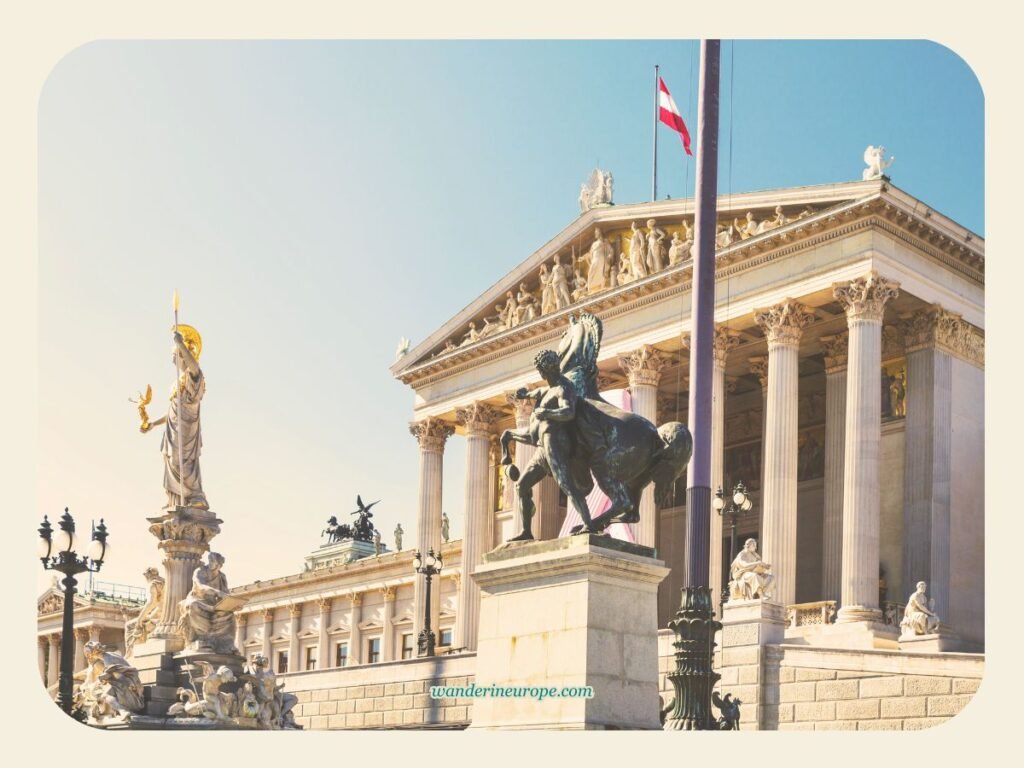
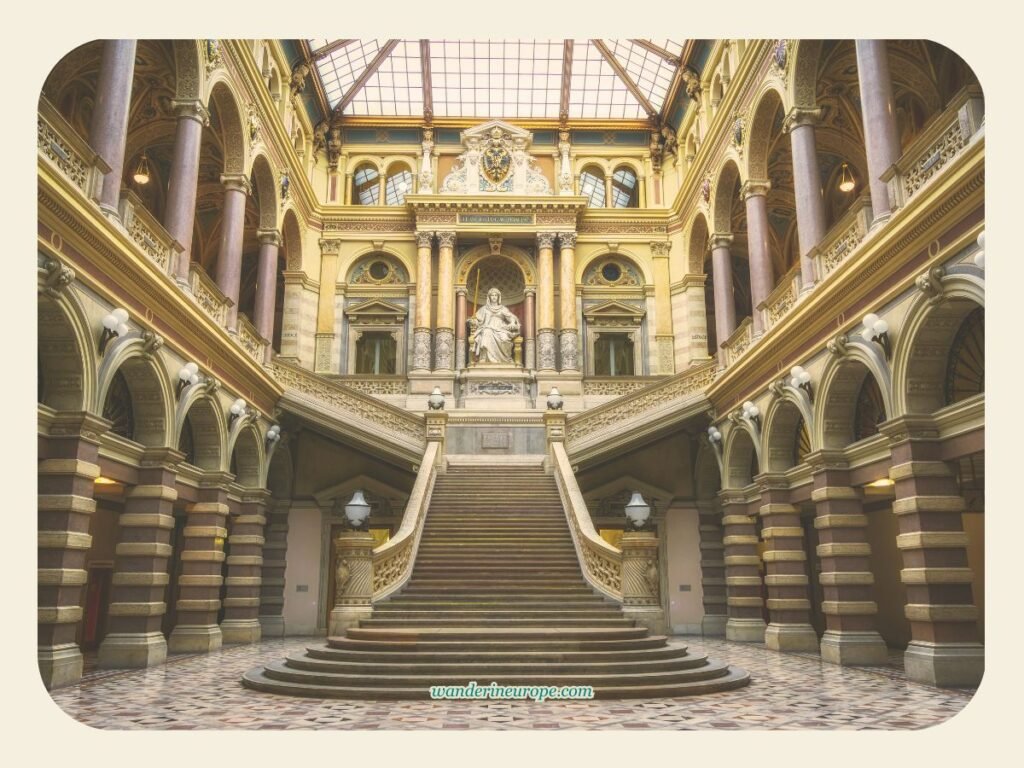

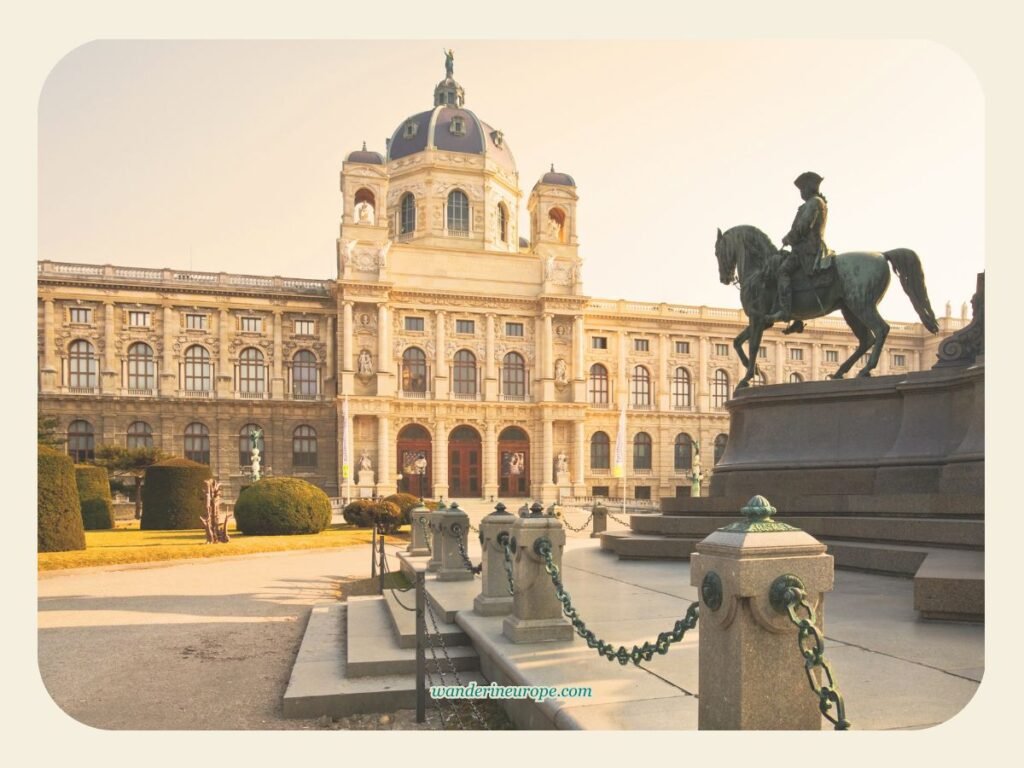
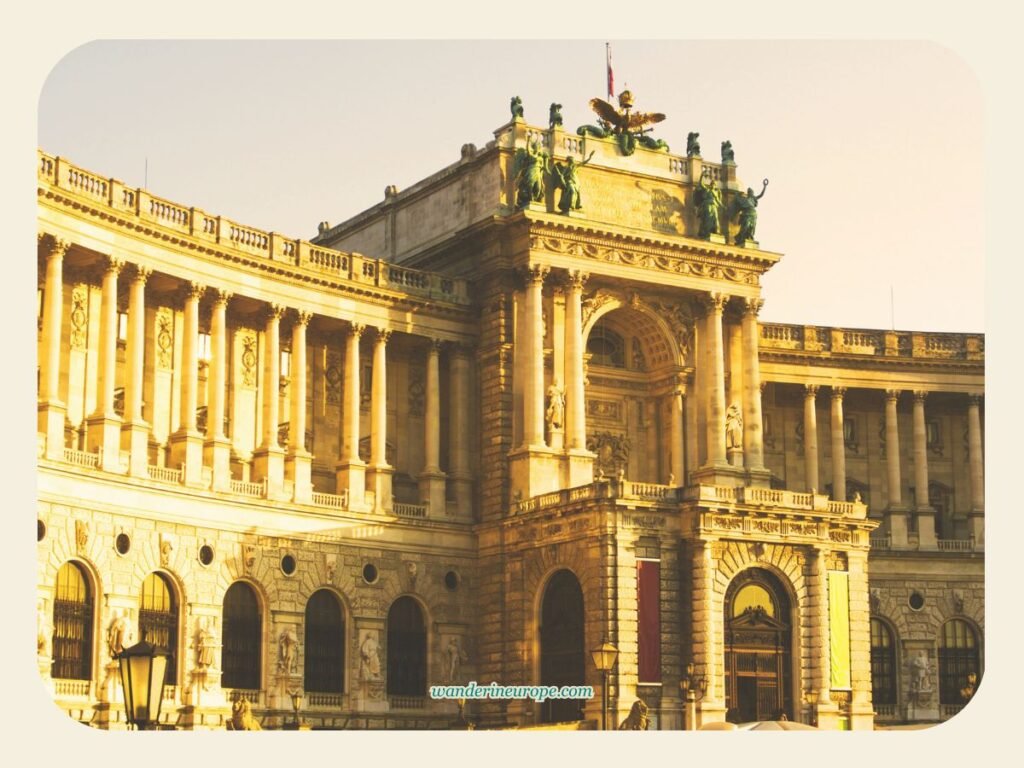
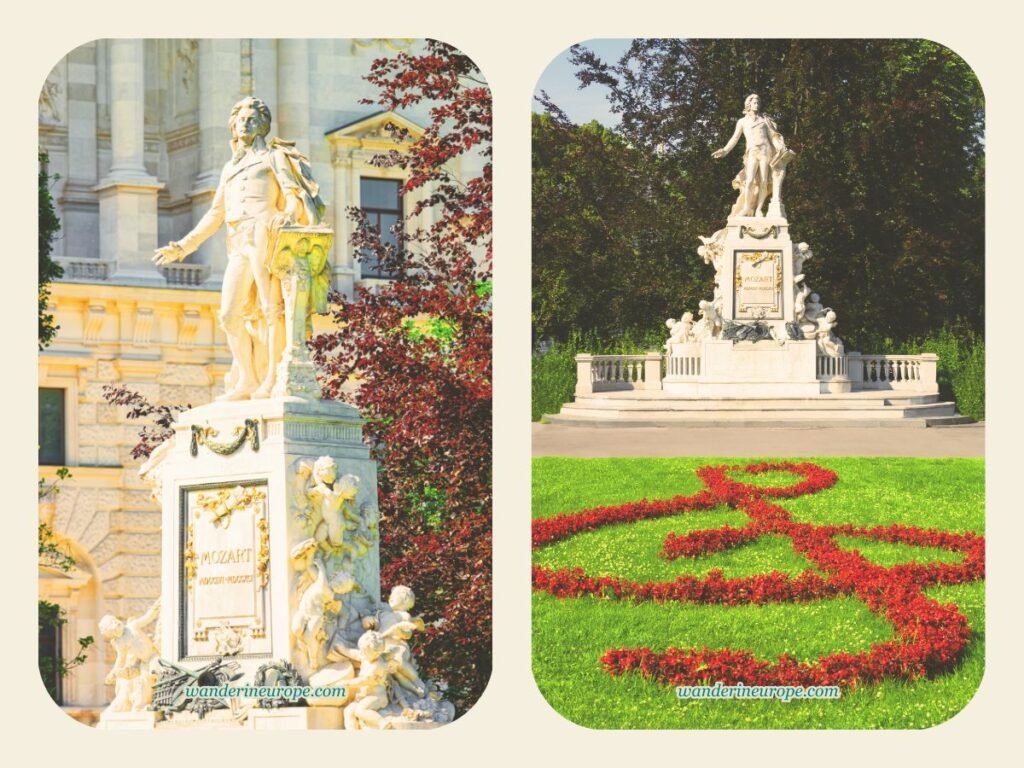
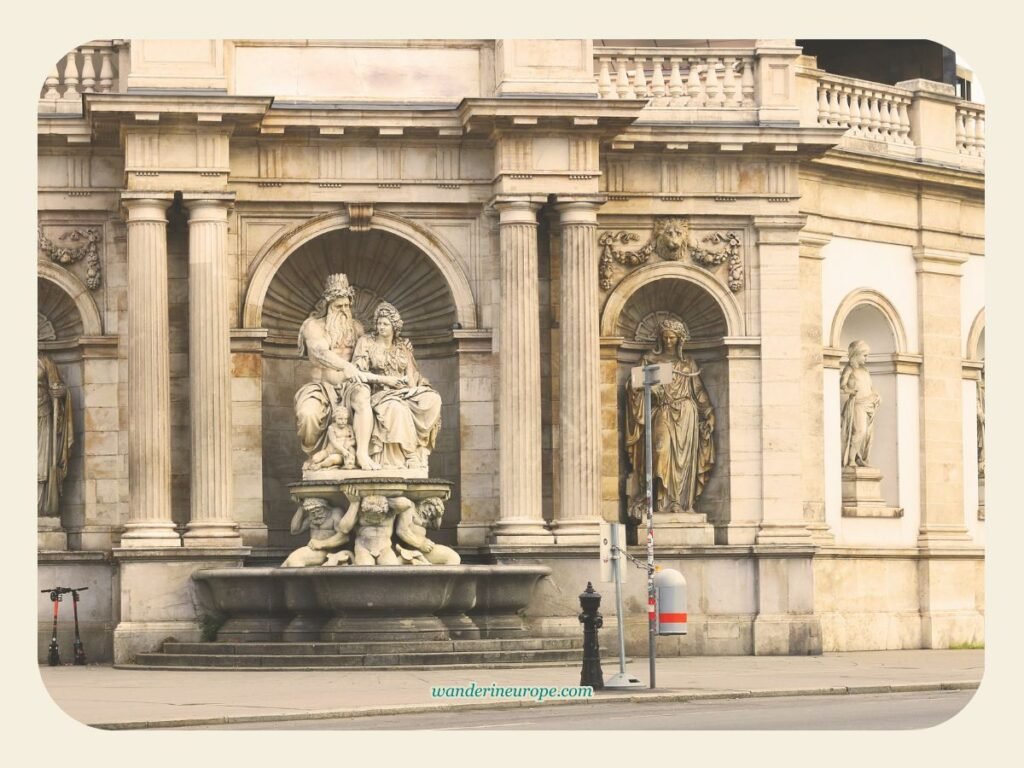
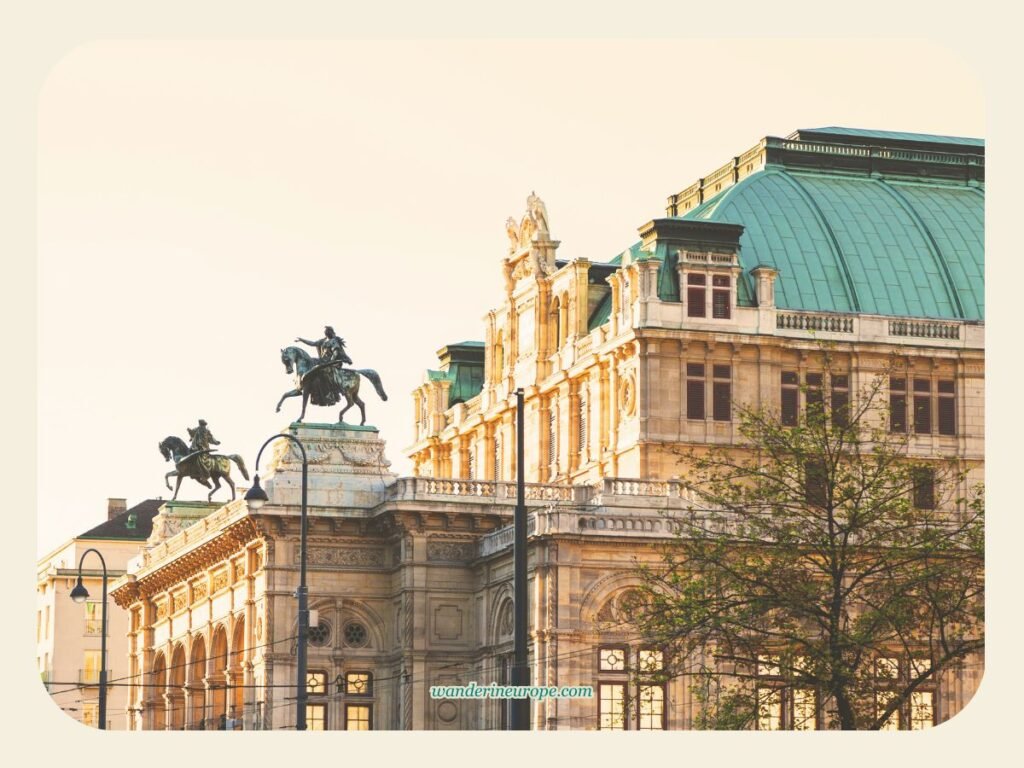
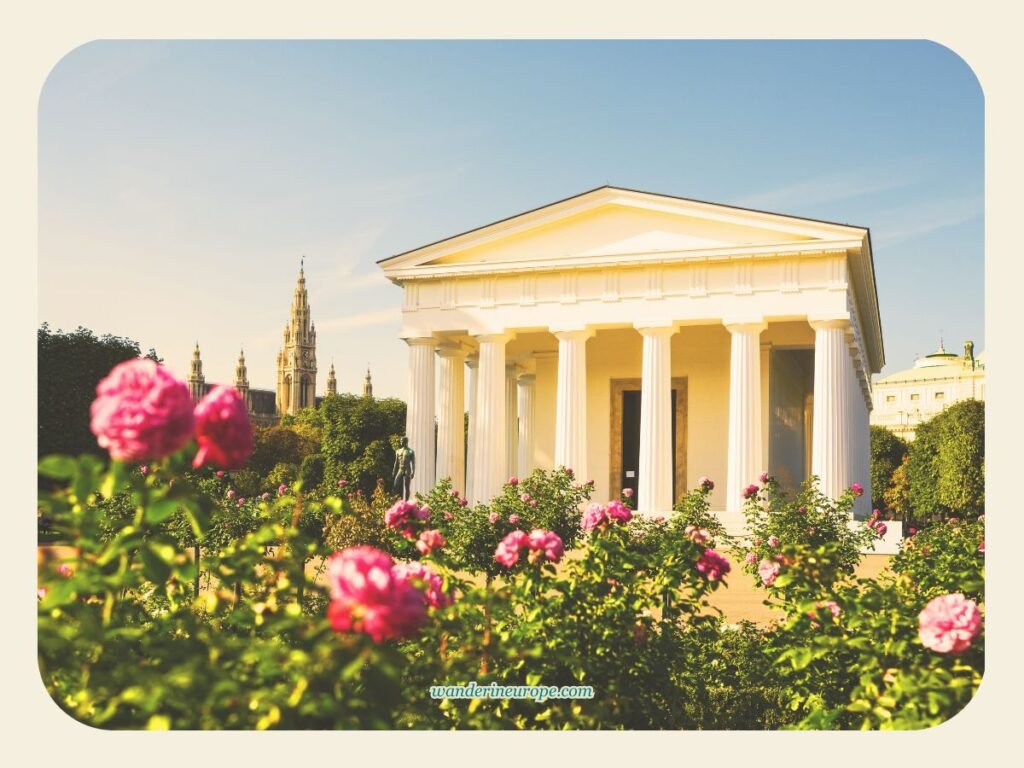

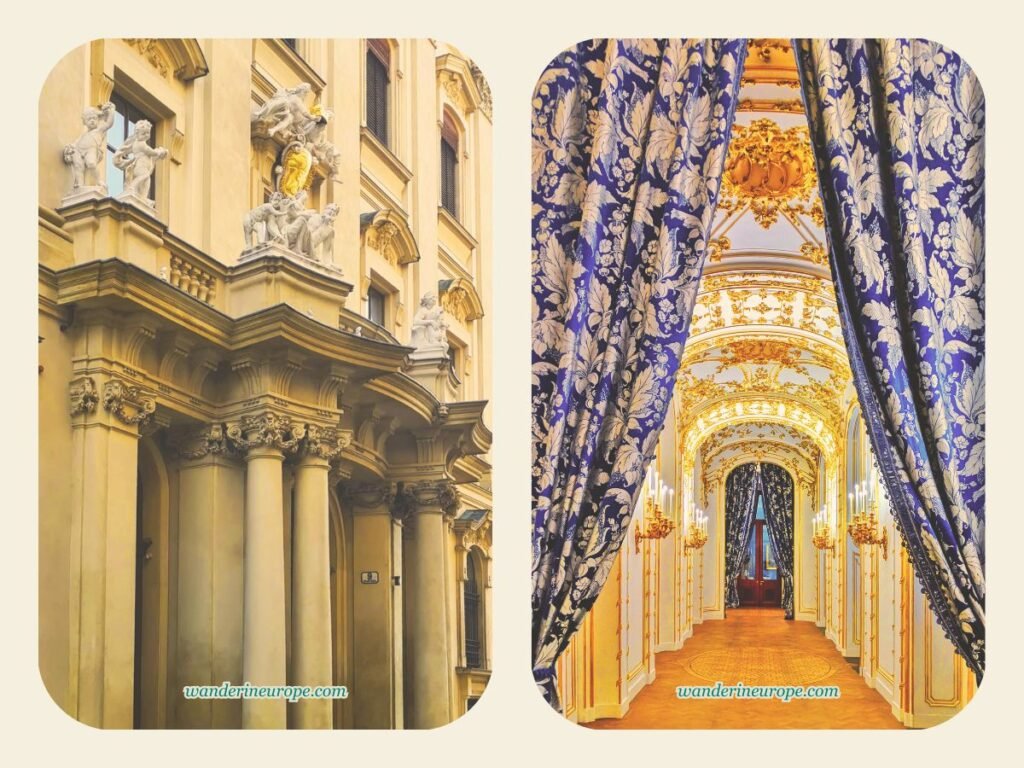
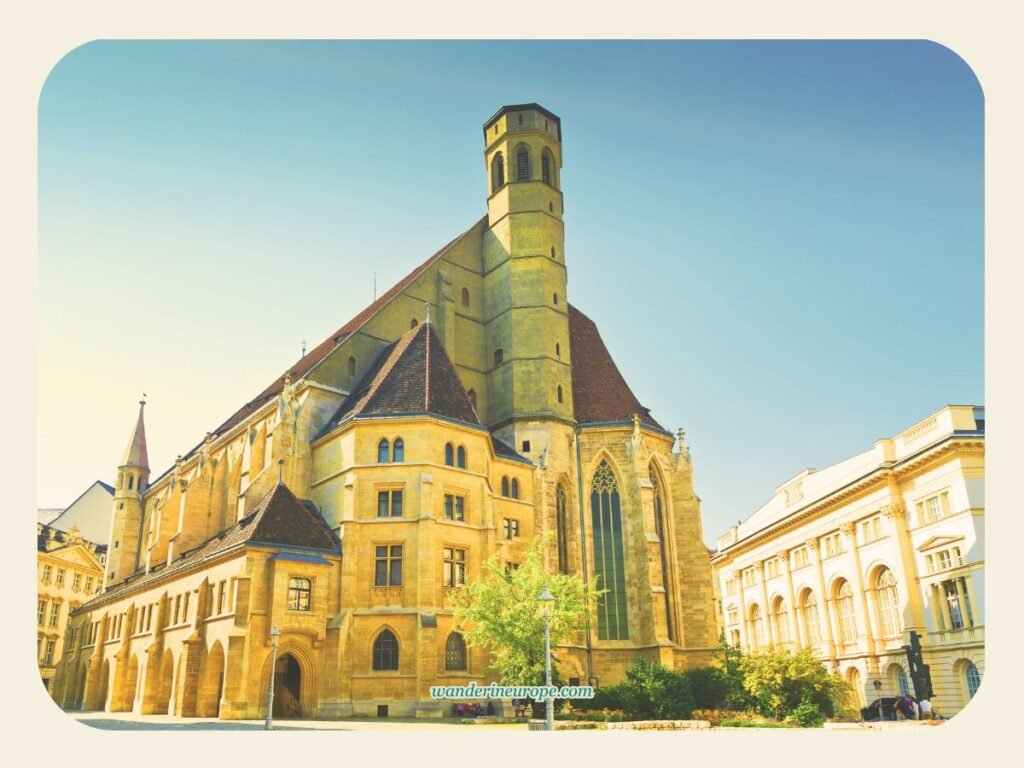
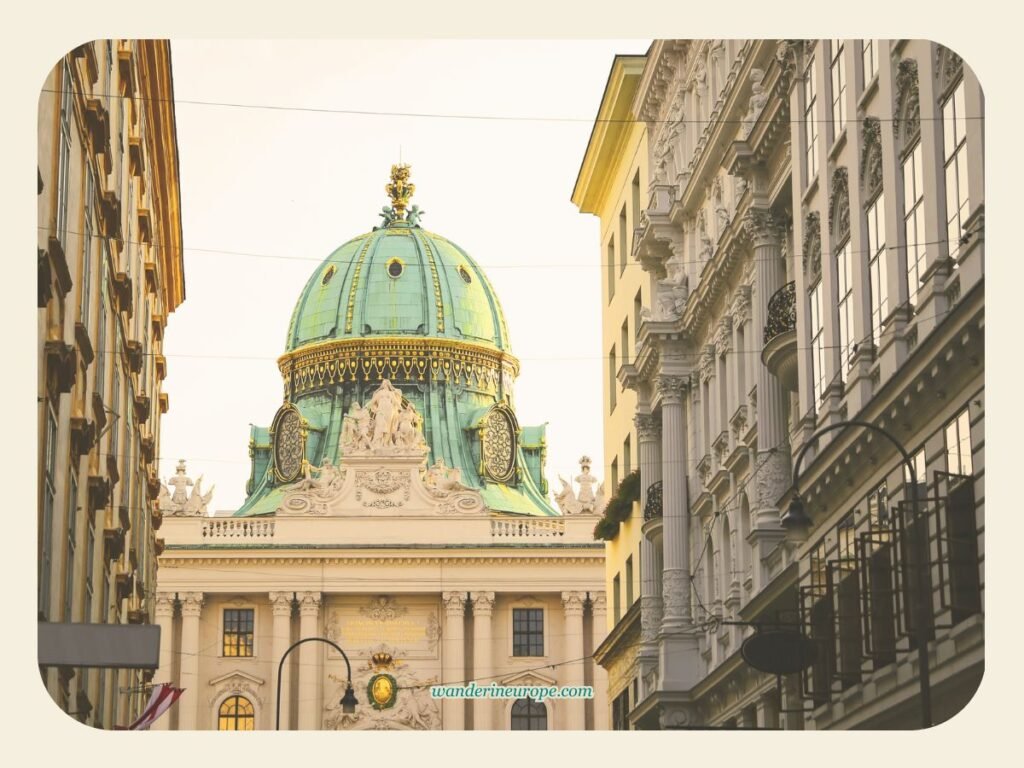
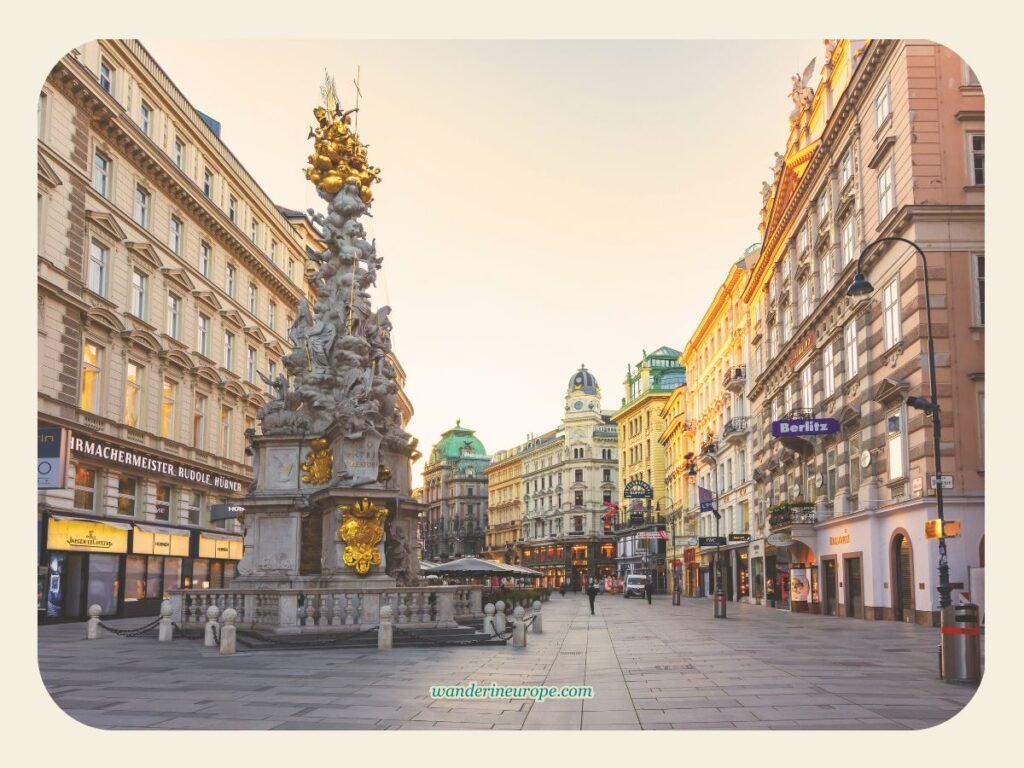
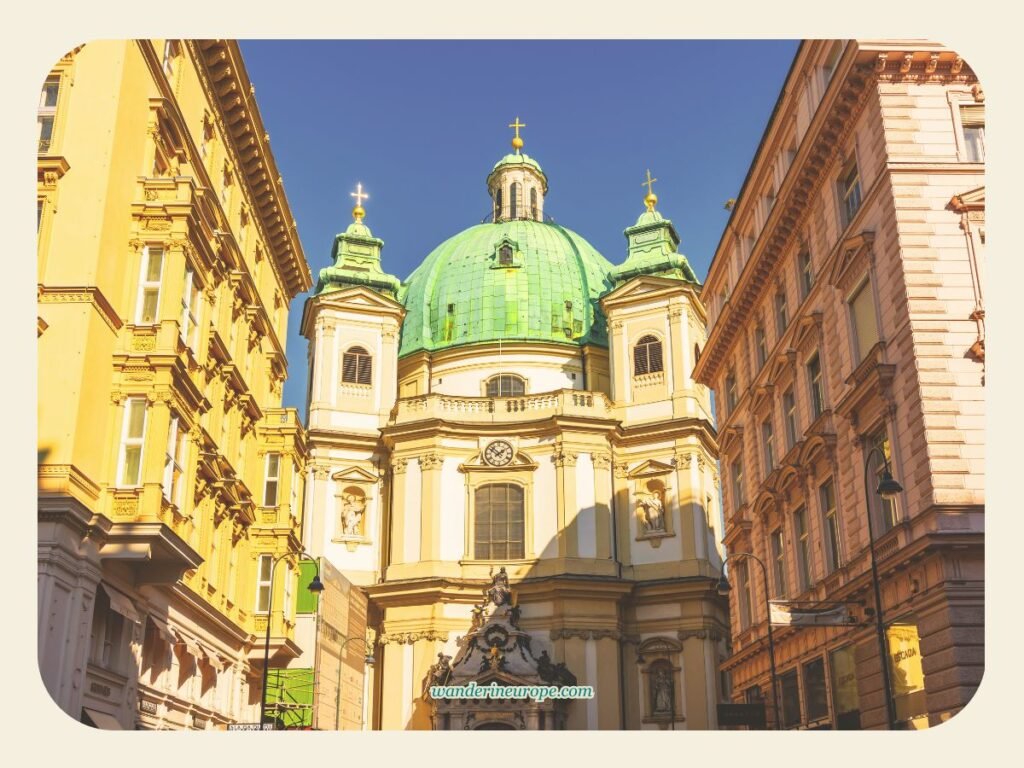

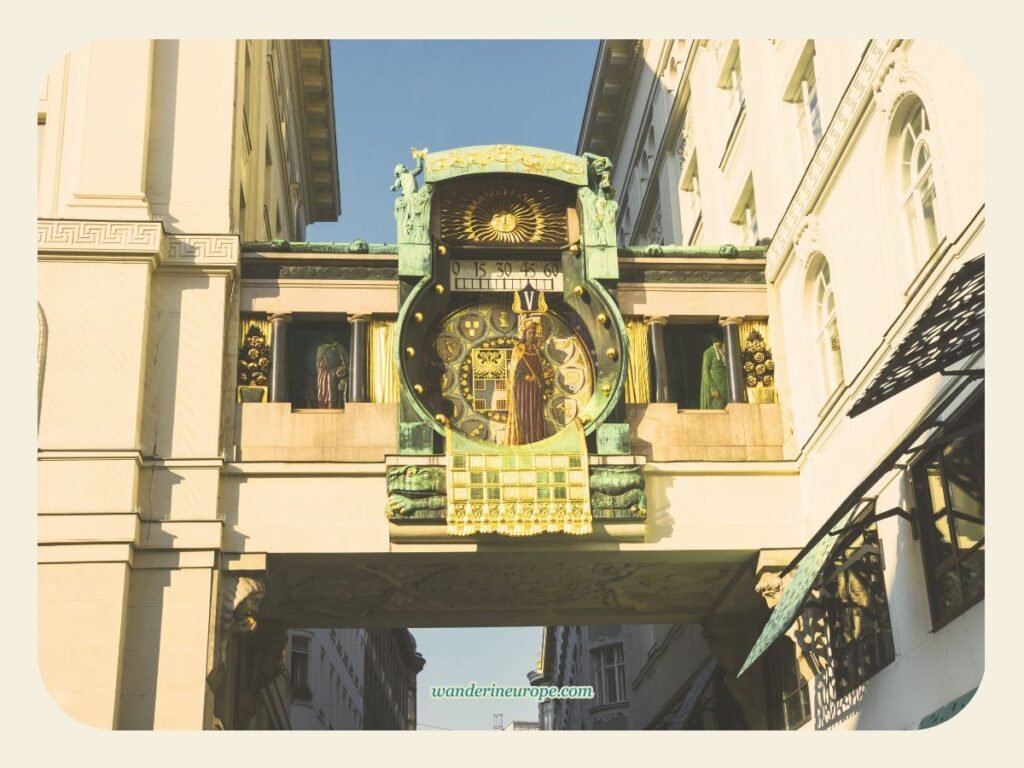
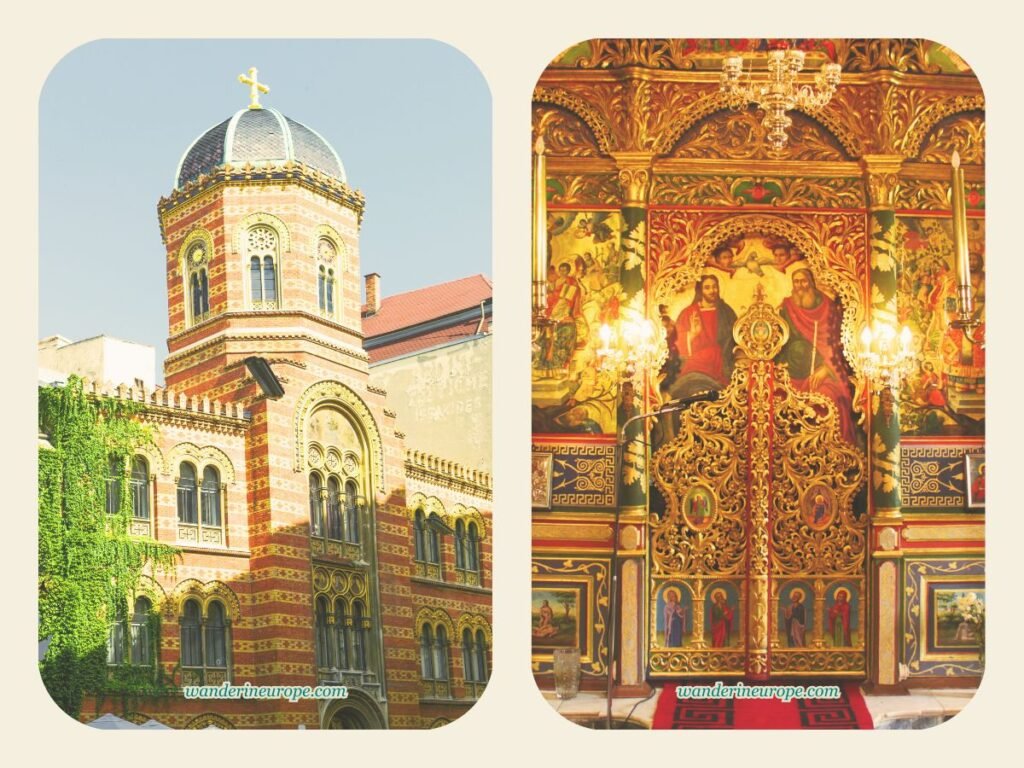
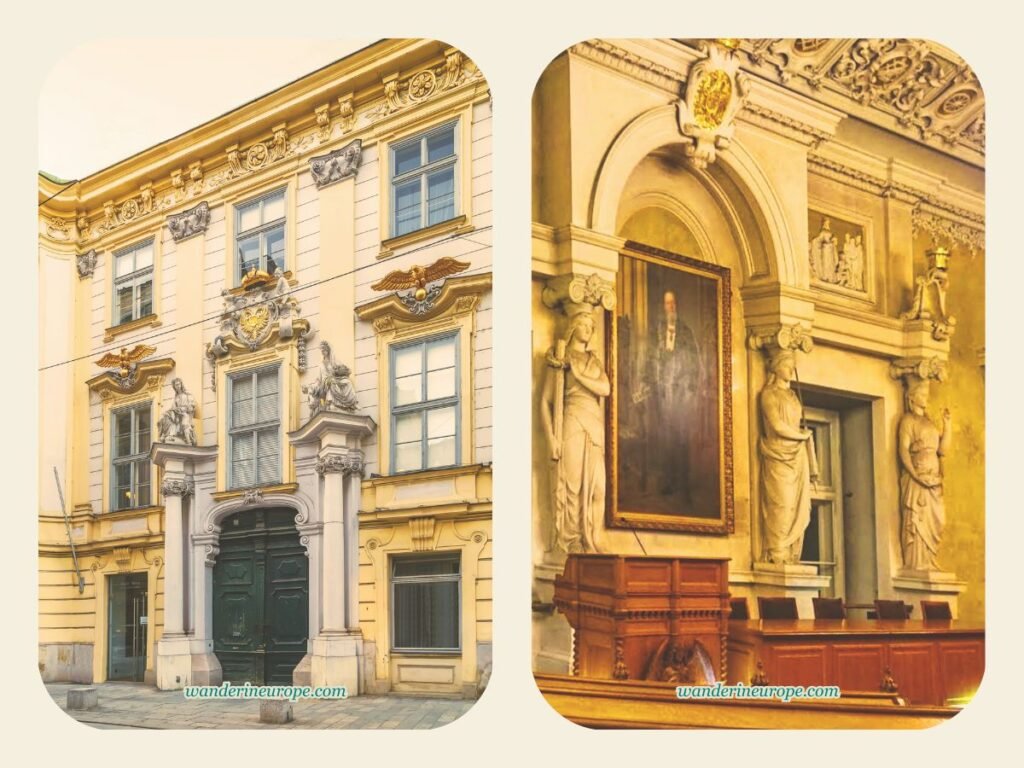
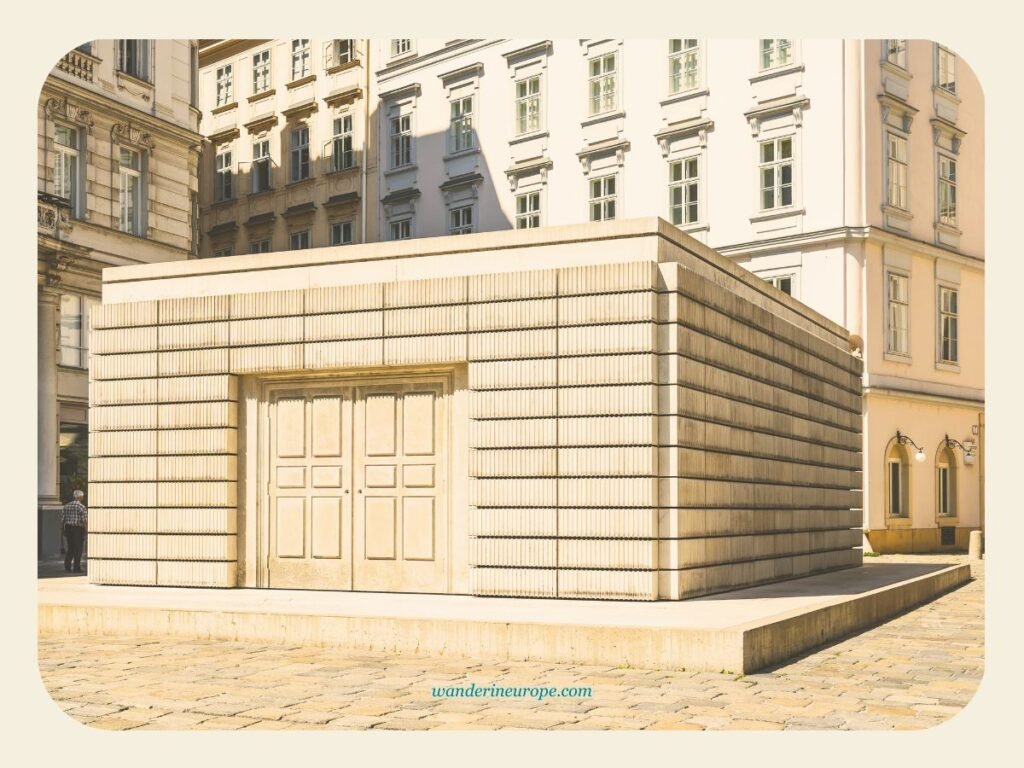
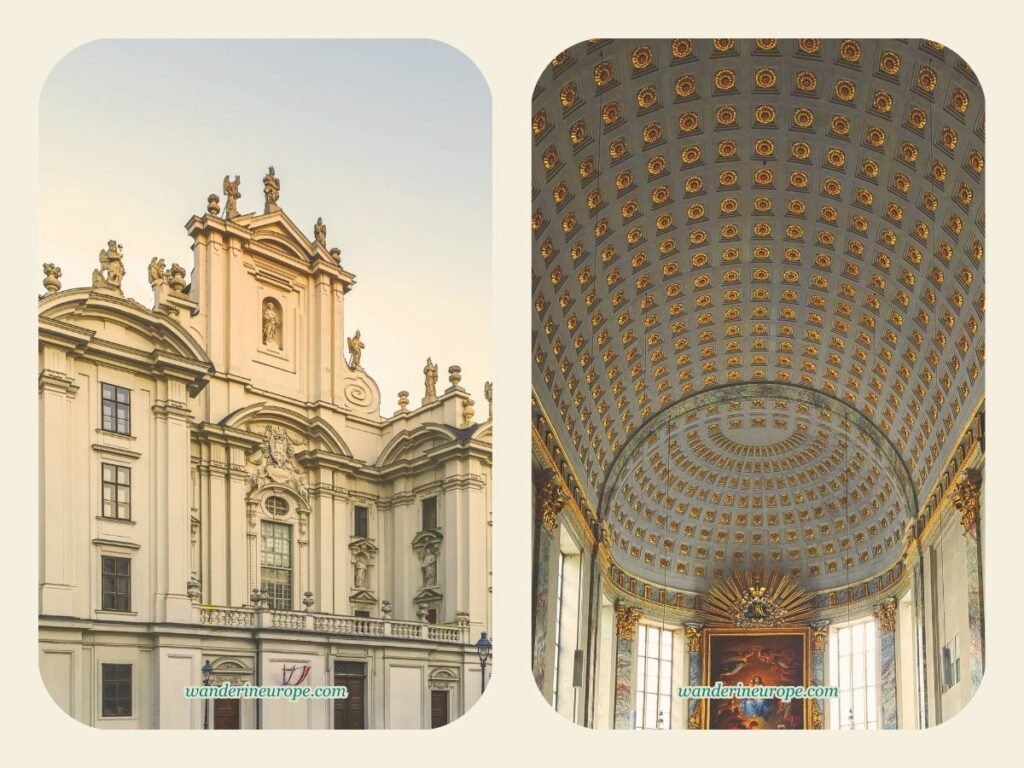
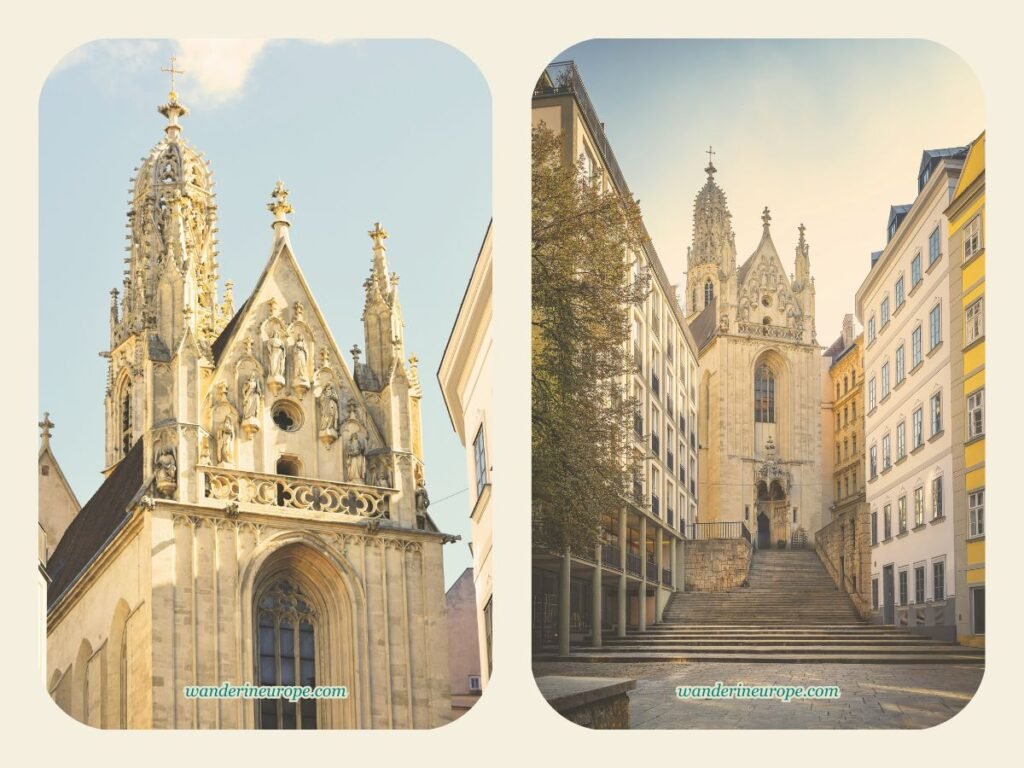
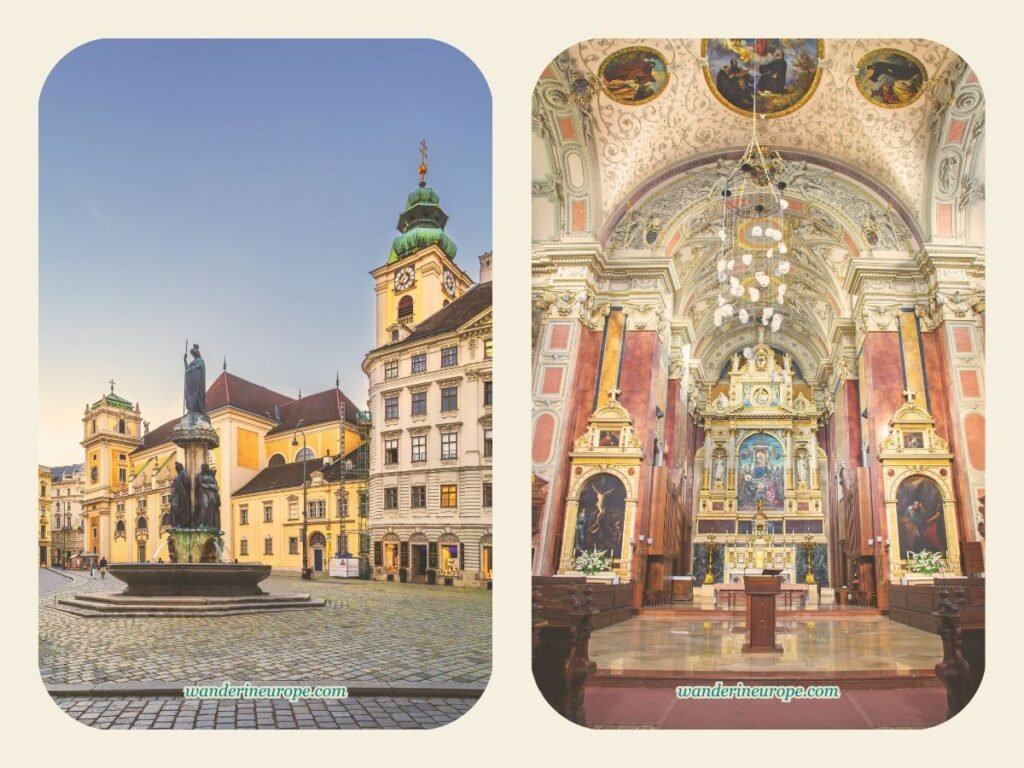
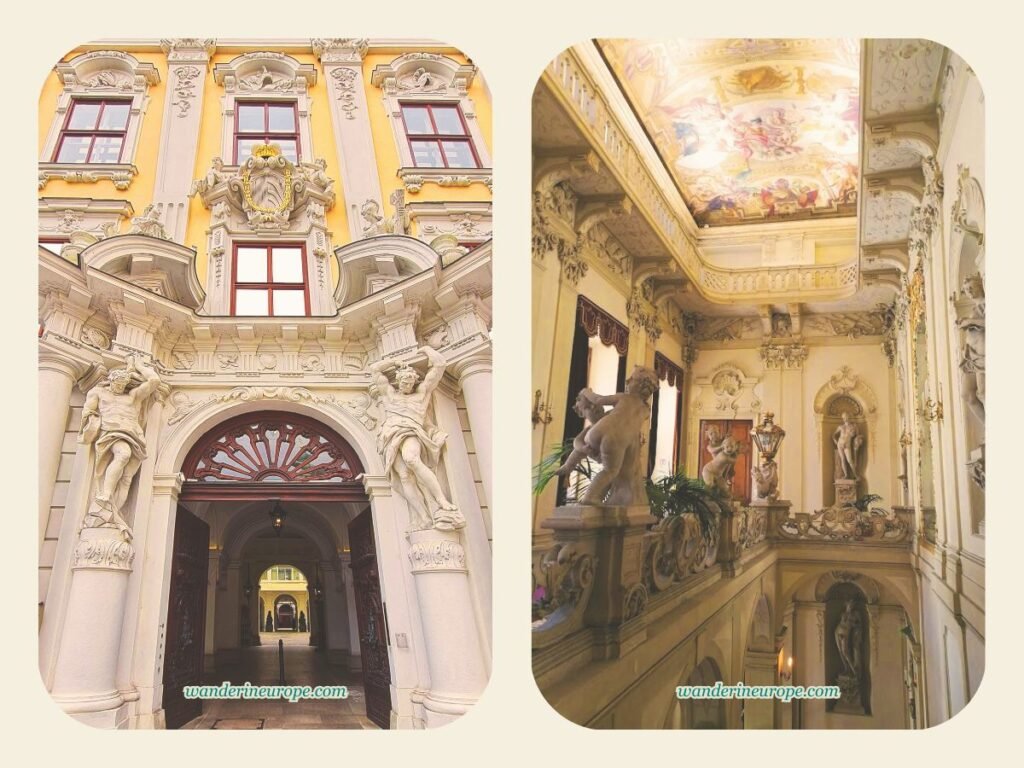
Walking Tour Itinerary Details
Is this walking tour your first activity upon arriving in Vienna? Consider taking the walking route in a counter-clockwise direction. It will provide a stunning first impression of the city, with the Votivkirche as your initial stop. Below are the details. Good to know: the sections are packed with tips, insights, and details you’ll definitely find handy as you explore the stops on this walking tour.
There are many beautiful churches in Vienna, but the Votivkirche is one that I find particularly breathtaking.
This neo-gothic church boasts intricate twin spires that puncture the sky gracefully. Its angelic appearance is sure to inspire you to take photos as soon as you step into Sigmund-Freud-Park.
What makes the Votivkirche interesting, aside from its appearance, is its historical significance.
It’s like a ‘Royal Thank You’ to God from the Habsburgs when Emperor Franz Joseph survived an assassination attempt in 1853. During your visit, take a quick detour behind the Cathedral in Votivpark. The flying buttresses and all its architectural features outside the choir are simply eye-catching.
See picture no. 1 in the gallery.
A short stroll from the Votivkirche, you can find the University of Vienna.
It’s another interesting landmark in the city with notable architecture. I am blown away by the main facade of the University of Vienna facing Ringstrasse, and I’m sure you’d also love to see its classical design.
Did you know? Founded in 1365, it’s one of the oldest universities in the German-speaking world.
Consider exploring other parts of the building during your visit. For instance, check out the fascinating artworks on the second floor at the rear facade of the university.
If you can manage to enter the university, you’ll see its most striking architectural feature, which is the Arkadenhof or arcaded courtyard. The arcaded courtyard is also home to monuments of notable bright minds related to the university.
Behind the main building of the university, you’ll find a street known as Reichsratsstrasse.
This street is dotted with coffee shops, likely catering to students in need of a caffeine kick for their studies. Even at this early stage of our walking tour, Vienna’s vibrant café culture is already evident.
See picture no. 2 in the gallery.
From Reichsratsstrasse, you can already catch sight of the Rathaus.
Its towers rise majestically, dominating the scene from the streets. The tallest tower, soaring at 98 meters, seems to whisper to anyone who gazes upon it: ‘Come closer, and I’ll make you forget all your worries for a moment.’
Interestingly, if you’ve visited Brussels before, the appearance of Vienna’s city hall might seem familiar. It was built in the same Gothic style with a touch of Flemish influence, just like Brussels’ city hall.
For the best view, find a spot in the middle of Rathausplatz, the square in front of the city hall.
From there, you can take in the full view of the city hall’s imposing facade. You can also get a clear view of the pinnacle of the city hall’s tallest tower where the Rathausmann stands. He’s a standard bearer made of iron and a symbol of the city.
Imagine you’re standing in the middle of Rathausplatz, soaking in the view of Vienna’s City Hall. If you turn around, you’ll spot the Burgtheater, another picturesque landmark in the city.
If you’re following the full walking tour route, you might want to wait until later to approach it and see it up close.
However, if you’re opting for the shorter route, you could simply cross the street from Rathausplatz — it’s the perfect opportunity — since it isn’t included in that route.
See picture no. 3 in the gallery.
From the moment you start this walking tour, you might notice that it’s one beautiful building after another when exploring Old Town Vienna.
For instance, just a few steps away from the Rathaus, you’ll find the Austrian Parliament. It’s an incredibly beautiful building that made me realize this: ‘Vienna is indeed a descendant of ancient Greek and Roman civilization; a true city of western civilization.’
The classical revival style, the gilded artworks beneath the ceiling, akroteria, relief above the roof, and the Athena fountain (Pallas-Athene-Brunnen) in front of the building should give you that impression.
When you visit, there are a few spots that you might want to check out for some great photo ops. Take a look at the space between the two gigantic columns at the back of the Athena fountain.
I also think the spot in front of the fountain, facing the gigantic columns of the parliament building, is worth capturing.
See picture no. 4 in the gallery.
Situated just behind the Austrian Parliament, the Justizpalast is a gem often missed by those exploring Ringstrasse.
It’s a significant oversight, particularly for those who appreciate fine architecture. Simply put, the Justizpalast is the home of the Supreme Court of Austria and a remarkable architectural site—it’s a prime example of Renaissance style infused with elements of historicism.
While its facade may not be as grand as the parliament building or the city hall, the real treasure lies within: an elaborate covered courtyard and staircase leading to a statue of justice personified. Holding a golden sword, this statue stands as a beacon of reason and justice.
I must admit, considering all the intricate details in the courtyard and of the staircase, this is among the most stunning Supreme Court buildings I’ve ever laid eyes on.
If you find yourself near the Justizpalast during its operating hours, which are from 7:30 am to 3:30 pm, Monday to Friday, I encourage you to step inside and marvel at its majestic staircase. Please remember, you’ll need to go through a security check to enter!
See picture no. 5 in the gallery.
If you’re standing in front of the Justizpalast and you glance to your left, you’ll see the Naturhistorisches Museum. In my opinion, it’s one of the most stunning museums in the city.
It’s constructed like a palace, and its grandeur is evident even before you step inside. Just a look at the museum’s facade from Maria-Theresien-Platz will leave you visually impressed.
The facade of the building is adorned with figures and statues that represent the advancement of natural sciences and the might of nature. The imperial inscription in gold letters proclaims: ‘Dedicated to the realm of nature and its exploration.’
As you take in all the intricate details, you’ll be convinced that it’s truly one of the city’s most exquisite museums. And just wait until you step into the reception area.
The ornate ceiling, the marble pillars, and the grand staircase, all immediately visible, will leave you in no doubt that you’re standing in an architectural marvel. Inside, you’ll find fascinating exhibits about nature.
Displays of fossils, prehistoric creatures, and more fill the museum. If you’re interested in exploring deeper, it would be best to do so after the walking tour.
To truly appreciate everything it has to offer, you’ll need more than just a few hours.
See picture no. 6 in the gallery.
When you get to Maria-Theresien-Platz, you might be in for a surprise. There are two stunning architectural wonders there, standing like mirror images on each side of the square.
To the north, you’ve got the Naturhistorisches Museum. Right across from it is the Kunsthistorisches Museum, another undeniably notable museum in Vienna.
Just like the Naturhistorisches Museum, it’s decked out with some real eye-catchers: a whole series of statues that bring the arts and their history to life. What’s cool is that it also has statues of some well-known artists, lined up in order from the old-timers all the way up to, I think, the Renaissance.
When I look at the front of the Kunsthistorisches Museum, I can’t help but be wowed and find myself falling even more in love with traditional architecture. The way they’ve used creativity to show what the building’s all about is just incredible.
Again, just like the Naturhistorisches Museum, the Kunsthistorisches Museum is also set in a palatial building. The facade of the museum is just the start of the many awe-inspiring sights you’ll see when you visit this landmark.
The interiors of the Kunsthistorisches Museum are something to behold… and the exhibits it holds? They’re absolutely amazing. You’ll come across art pieces from all over the globe, some of which are even over 2000 years old!
For those who love to explore, this museum is a must-see. If you find yourself with a bit of extra time after this walking tour, setting aside 2 to 3 hours to spend inside the Kunsthistorisches Museum would be time well spent!
You can check out my guide about the Kunsthistorisches Museum for a sneak peek of the amazing exhibits that are waiting for you there.
By the way, in between Kunsthistorisches Museum and Naturhistorisches Museum, there’s the impressive monument of Empress Maria Theresa — the ruler of the Habsburg Monarchy from 1740 to 1780.
In that monument, she is depicted sitting on her throne, greeting her people with her right hand. In her left, she’s holding a scepter and the Pragmatic Sanction, a state and constitutional treaty that allowed her to rule.
Around the base of the monument, you’ll find four female figures, each representing a cardinal virtue: justice, strength, mildness, and wisdom.
On each side of the plinth, there’s a relief and a free-standing statue that represent different aspects of her reign, like her advisors, her administration, the military, and arts & science.
See picture no. 7 in the gallery.
From Maria-Theresien-Platz, where Naturhistorisches and Kunsthistorisches Museums are located, you can already catch a glimpse of the Hofburg — one of the city’s crown jewels.
It’s your next stop after appreciating the museums, and it’s certainly something to look forward to. Why, you ask? Of all the landmarks on this walking tour, the Hofburg, also known as the Imperial Palace, holds the highest significance.
Hofburg served as the winter residence of the Habsburg Emperors and now stands as a cultural epicenter filled with fascinating discoveries: from the stories of Empress Sisi to the Lipizzaner Stallions. The Austrian National Library, deemed the most beautiful library in all of Austria, is located within the Hofburg.
Of course, Hofburg is also a visual highlight of this walking tour. Hofburg offers the most opportunities for stunning photos. Visually appealing architectural features and picturesque spots await you seemingly at every corner of the palace.
One such spot is immediately accessible after you cross Ringstrasse from Maria-Theresien-Platz. This is the Outer Castle Gate — a piece of the city’s fortification constructed in 1660. Today, it is also a military monument honoring those who fell in WWI.
The arcades of the Outer Castle Gate provide excellent photo opportunities. You can use the arcades and the columns of the landmark to frame your subject, which could be the Neueburg of Hofburg or either of the two museums on the opposite side of Ringstrasse.
Passing through the Outer Castle Gate, you’ll find yourself in Heldenplatz, home to the statues of two of Austria’s heroes: Prince Eugene of Savoy and Archduke Karl. These two figures played pivotal roles in protecting the Austrian empire from invasions by the Turks and Napoleon, respectively.
The statue of Prince Eugene, in particular, is one of Vienna’s most photographed, owing to its prime location that allows for a striking photo with the grand facade of Hofburg’s Neueburg as the backdrop.
From Heldenplatz, you can find a pathway leading to In der Burg, the open area located between the Swiss Wing and the Leopold Wing of Hofburg.
This space serves as the courtyard of Hofburg and is the location of the Schweizertor. Also referred to as the Swiss Gate, this Renaissance gate is among the palace’s oldest structures. Amazingly, it dates back to the mid-16th century!
If you’re facing the Swiss Gate now and you look to your left, you’ll notice another passageway. This leads to Michaelerplatz, where more architectural features of Hofburg are on display. Among these are the statues of Hercules and a mesmerizing, intricately wrought iron gate of the palace.
Just before you reach Michaelerplatz, though, you’ll pass by a circular hall with a dome that’s perfect for photos. The entrance to Sisi’s Museum and other sections of the imperial palace are also located there.
If you opt for the shorter route of this walking tour, your next activity after visiting the Outer Castle Gate would be to explore Heldenplatz, In der Burg, and Michaelerplatz. However, if you choose the complete route, you’ll have another chance later in the tour to see these parts of Hofburg.
The idea of pausing the walking tour upon reaching Hofburg, given the experiences and discoveries it offers, might cross your mind. If you’re able to resume the walking tour after exploring the palace, that could be a good plan. Take a look at my Hofburg guide, it’s designed to help you maximize your palace visit.
See picture no. 8 in the gallery.
Exploring the streets of Old Town Vienna also means discovering pieces of the city’s heritage and history, thanks to the monuments that dot the city’s streets and parks!
On this walking tour, you’ll come across a number of them. In fact, if you kick off your tour from Votivkirche, you’ll already have encountered three of them by the time you reach Hofburg.
The first is the monument of Maria Theresa, nestled in her square between the twin museums, followed by the monuments of Prince Eugene of Savoy and Archduke Karl, both located in Heldenplatz.
Interestingly, did you know that you can also find monuments dedicated to the city’s artists, poets, and musicians scattered around?
One of them is Mozart, which is quite easy to locate once you’re in Hofburg. Simply head to the park behind Neueburg, known as Burggarten.
There, you’ll find it along with other monuments, including those of Franz Stephan von Lothringen, Kaiser Franz Joseph, and Johann Wolfgang von Goethe — a renowned German poet and writer from the 18th and 19th centuries.
Mozart’s Monument, I believe, is one of the city’s most picturesque monuments. There, Mozart is represented in bronze, with reliefs illustrating scenes from his opera Don Giovanni—a heartfelt portrayal of a young Mozart creating music with his father and sister.
Feel free to take a selfie there as a memento! And remember to capture the flower bed, designed in the shape of a G-Clef, in your shot!
See picture no. 9 in the gallery.
Once you arrive at Burggarten where the Mozart Monument is, you’re just a quick stroll away from the Albrechtsbrunnen. I think it is one of the most interesting fountains that I’ve discovered in Old Town Vienna.
It’s also known as the Danube Fountain and it’s this beautiful Renaissance-style wall fountain that’s built right into the wall below the Albertina Museum. It was unveiled way back in 1869 and is named after Archduke Albrecht.
What’s really interesting about this fountain is the story it tells. It’s all about the relationship between Vindobona, which is the city of Vienna, and Danubius, the Danube River.
The main part of the fountain shows three tritons (those are like mermen) supporting Danubius who’s sitting down with his arm around Vindobona.
This fountain, in a way, brings to mind the Trevi Fountain in Rome, given its unique position at the crossroads, much like the Trevi.
See picture no. 10 in the gallery.
Starting from Albertinaplatz, where you’ll find Albrechtsbrunnen, you can already see your next stop: the Vienna State Opera.
This is one of the world’s premier opera houses, renowned for staging works by legendary composers like Richard Wagner, Mozart, and Richard Strauss. It’s housed in a beautiful Renaissance Revival building that you’re sure to fall in love with at first sight.
After checking Albrechtsbrunnen, make your way across the streets to get a closer look at the Vienna State Opera. Feel free to stroll through its arcades.
If luck favors you and the doors of the Vienna State Opera are open upon your arrival, seize the opportunity to peek inside and marvel at its magnificent staircase.
Here’s a tip: the Vienna State Opera offers a guided tour.
This 40-minute tour requires an online booking. If you have a Vienna Pass, it’s free of charge. For this walking tour of Old Town Vienna, I suggest scheduling the opera house tour either before or after to keep your sightseeing schedule flexible.
To fully appreciate the exterior of the Vienna State Opera, I recommend taking in the main facade and the two fountains adjacent to the building.
Consider pausing at the bus stop in front of the Vienna State Opera for an optimal view of the building’s facade. From this vantage point, you can simultaneously observe Hähnel’s five bronze figures perched atop the arches of the veranda.
These figures represent, from left to right: heroism, tragedy, fantasy, comedy, and love. Don’t miss the statues of the two horseback riders, symbolizing Erato’s winged steeds, guided by ‘Harmony and the Muse of Poetry.’
Flanking the opera house are two fountains, each illustrating contrasting worlds. The fountain to the left is about music, dance, joy, and levity. On the other hand, the fountain to the right is about seduction, sorrow, love, and vengeance.
See picture no. 11 in the gallery.
After visiting the Vienna State Opera, we head to Volksgarten, another picturesque garden in Vienna. While I was exploring this garden, I stumbled upon countless photo ops.
You can spot most of the iconic landmarks along Ringstrasse right from this park! The towers of Vienna’s Rathaus, the Austrian Parliament Building, and the dome of the Naturhistorisches Museum all peek out from above the park’s trees.
So, when you visit, let your inner photographer shine: use the water in Volksgartenbrunnen’s basin for reflection shots; frame the Franz Grillparzer Monument (it’s at the garden’s corner) with the Naturhistorisches Museum building in the background; or snap a picture of the Burgtheater from an angle near the flowerbeds!
If you’re feeling a bit tired during this walking tour, the Volksgarten is the perfect place to take a breather. It’s filled with shady spots and benches where you can kick back, relax, and soak in the beautiful views.
If you’re feeling thirsty or peckish, the Café Meierei Volksgarten is right around the corner.
Before you leave the park, though, don’t forget to check out the Theseustempel. It’s this white building in the middle of Volksgarten, built in the style of a Greek temple.
What’s really nice is that the temple hosts unique exhibitions, usually showcasing contemporary art, and guess what? They’re free to visit. These exhibitions switch up every year, as far as I know.
Just a quick tip, if you’re heading to Volksgarten from the Vienna State Opera, take this route to see more of the city:
- Start at Albertinaplatz, then take a slight left onto Augustinerstrasse.
- Continue onto Josefsplatz and then Reitschulgasse. Make a left at Michaelerplatz and proceed to In der Burg.
- You’ll end up at Heldenplatz, which is right next to Volksgarten.
See picture no. 12 in the gallery.
Similar to the Vienna State Opera, the Burgtheater is another notable entertainment landmark located in Old Town Vienna.
Known as “die Burg” among locals, this theater is one of the largest and oldest in the world, making it the most prestigious German-language theater.
Designed in a Neo-Renaissance style, the Burgtheater boasts an imposing semi-circular front facade. It features two levels of arched windows and a grand portal adorned with Corinthian columns.
The use of classical elements such as columns, pilasters, and pediments lends the building a beautiful proportion and symmetry.
I suggest appreciating it up close—the sculptures adorning the Burgtheater are allegorical representations of the arts.
At the very top of the attic, in the center, sits a seated Apollo. Crowned with a laurel wreath, he holds a lyre, symbolizing the divine inspiration of art.
If you are already at Volksgarten, getting to the Burgtheater is not a problem. This beautiful building is visible from most parts of Volksgarten.
In case you haven’t photographed the Burgtheater, you can cross Ringstrasse to Rathausplatz. It’s in that square that you can find the best viewpoint for this landmark.
See picture no. 13 in the gallery.
Just a short walk from the Burgtheater, you’ll discover the Stadtpalais Liechtenstein—a lesser-known jewel in the heart of Old Town Vienna.
This palace is a prime example of High Baroque Architecture in the city. Its impressive architecture might not stand out immediately from the streets, unlike Vienna’s more famous architectural sites, but as you approach its facade, its beauty becomes apparent.
One of the standout features is the facade along Bankgasse. If you know the works of Bernini, a well-known Italian Sculptor, you’ll notice the strong influence of his style on the palace’s facade.
I can’t help but point out the main gate, a central element of its facade. The two massive pilasters that frame the two main floors of the palace are quite eye-catching.
But the facade has more to show you. The relief sculptures decorating the windows are an intriguing sight.
What’s interesting is that they display a variety of facial expressions, and some even depict faces of mythological creatures. It makes you wonder why the palace’s owner chose to place them there!
The Stadtpalais Liechtenstein is even more magnificent inside. The stunning blend of Baroque stucco ceilings, lavish neo-Rococo interiors, and authentic furnishings, all enhanced by Michael Thonet’s exquisite parquet flooring, come together to create a perfectly harmonious ensemble.
Sadly, the palace is not open to the public. However, there is a public tour that takes place a few times a month. The information can be found on the official website of the Liechtenstein City Palace.
A more special way to see the interiors of the Stadtpalais Liechtenstein is by attending a concert. This palace is one of the most stunning places in the city to watch a concert!
However, I suggest attending the concert or a guided tour outside of this walking tour of Old Town Vienna. Again, this is to allow for more flexible sightseeing time.
See picture no. 14 in the gallery.
Your next destination after visiting the Stadtpalais Liechtenstein is just a short walk away: the Wiener Minoritenkirche.
If you find yourself in Bankgasse, admiring the facade of the palace, take a left and then make a right. In just a little while, you’ll find yourself at Minoritenplatz, where the church stands.
On first look, you might think this church is just another Gothic Church you’d find anywhere in Europe. But it’s got its own charm in Vienna. It’s the only church here built in the French Gothic style.
When you drop by, take a moment to appreciate its portal. It follows a French style that’s quite a rarity in Austria.
And let’s not forget its windows along the nave. Each one follows a different pattern. You’ll find a window designed like a rose and another with a lacy style.
Anyhow, the Wiener Minoritenkirche is also known as the Italian National Church of Mary of the Snows, which is tied to the Italian Congregation that owns the church.
One of the most amazing things inside is a mosaic copy of da Vinci’s Last Supper, which Napoleon himself commissioned.
See picture no. 15 in the gallery.
After visiting Wiener Minoritenkirche, it’s time to explore Kohlmarkt.
This is one of the most photogenic streets in Vienna, thanks to the unique view of Hofburg’s St. Michael’s Wing that can be seen from here. This is where the iconic view of Hofburg is captured. Photographers frame the palace with the buildings that flank the street.
More than just a photo spot, Kohlmarkt is a well-known street in the heart of Vienna.
It’s famous for its luxury shopping, boasting a variety of high-end fashion labels and jewelers. It’s part of what locals call the ‘Golden U’ – a trio of shopping streets that includes Graben and Kärntner Straße.
Fun fact: Kohlmarkt dates back to Roman times, when it was a route leading to the southwestern gate of the legionary camp Vindobona.
There are also coffee shops along this street, where you can rest and replenish your energy for the rest of the walking tour. However, they are priced at a premium by my standards.
See picture no. 16 in the gallery.
When you reach the end of Kohlmarkt, you’ll come upon Graben, another wander-worthy street in Vienna. If your walking tour falls in the winter season, this street transforms into a magical spectacle—it’s aglow with twinkling Christmas lights!
Nevertheless, Graben is indeed another highlight of any walking tour in Vienna’s Old Town, with its stunning architecture and intriguing sights. It’s a lively street, offering the simple pleasure of observing the diverse crowd wandering in various directions.
While I typically don’t shop during my travels, the high-end stores with their attractive storefronts piqued my interest as I explored Graben. Among them are Louis Vuitton, Rolex, Wagner, Swatch, and others.
If you’re looking for something really interesting, however, don’t miss out on the Wiener Pestsäule, also known as the Plague Column, and the Stock im Eisen, or Staff in Iron. If you’re making your way from Kohlmarkt towards Stephansdom, the first sight to greet you will be the Wiener Pestsäule.
The story of the Wiener Pestsäule goes back to 1679 when Vienna was hit by a really bad plague. It was so severe that tens of thousands of people died in just a few months.
So, the ruler of the empire at that time, Emperor Leopold I, made a promise. He said that if the city was spared from further devastation, he would commission a mercy column. And he kept his word.
The Wiener Pestsäule, also known as the Vienna Plague Column or Trinity Column, is a masterpiece of Baroque architecture. It’s got three layers: the first one shows scenes from the Old Testament, the second one has statues of nine angelic figures, and the topmost part is a golden statue of the Holy Trinity. It’s like a story told in stone.
At the farthest end of Graben, where it adjoins Stephansplatz, Stock im Eisen awaits. It’s a chunk of a tree trunk from the Middle Ages, now safely encased in glass on a corner of the Palais Equitable.
This spruce tree started growing around the year 1400, and for many many years, people, mostly traveling smiths and apprentices, hammered nails into it as a gesture of thanks or for good luck.
See picture no. 17 in the gallery.
Before you reach Wiener Pestsäule along Graben from Kohlmarkt, you might want to turn your attention to your left.
Peterskirche, one of the most spectacular churches in Vienna, awaits you on that side. Specifically, you should be able to spot Peterskirche while wandering along Graben, once you reach the intersection with Jungferngasse.
Interestingly, Peterskirche is one of the oldest churches in Vienna. Legend has it that it was even founded by Charlemagne! While it’s not proven, the relief on one side of this oval-shaped church somewhat lends credibility to the legend.
Unlike Votivkirche, which you saw at the beginning of the walking tour, Peterskirche does not boast striking exteriors. However, don’t judge a book by its cover!
The real beauty of Peterskirche is revealed once you step inside.
The palatial baroque interiors of Peterskirche are absolutely stunning. I can’t emphasize enough how unmissable it is for travelers seeking beauty, especially since you can enter the church for free!
See picture no. 18 in the gallery.
A spectacular sight awaits you at the end of Graben, once you step foot in Stephansplatz. That sight is Stephansdom, the largest and most important church in Vienna.
Some people describe this Gothic church as the needle around which the city revolves. And it’s not hard to understand why, with its angelic gothic spire that dominates the view from Stephansplatz.
As someone who loves history, visiting Stephansdom is a must. Its story goes all the way back to the 12th century. It has stood strong through many battles, from the Turkish wars to World War II.
Interestingly, there’s evidence that it was hit by cannonballs. One of these cannonballs is still stuck in the walls of the church’s south tower. It’s not easy to see from the ground, but if you have a camera with a good zoom, you might be able to spot it!
If you’re interested and if there’s still time left on your walking tour, consider taking a self-guided tour of the church. Typically, a self-guided tour in Stephansdom lasts about an hour, depending on your pace.
If you’re pressed for time, you can just step through its main doors for a quick peek at its grand, lofty interiors. One thing you can’t miss is the Gothic pulpit – it’s definitely a sight to behold!
If you’re up for it, you can climb the towers of Stephansdom for a sweeping view of the areas you’ve just explored on this walking tour. If you’d rather not take a guided tour or climb the towers, at the very least, take a leisurely stroll around this church.
There’s a lot to uncover, from its vibrant roof showcasing the Habsburgs’ coat of arms to the pulpit outside the church featuring a defeated Turk.
For more insights on what you can expect both inside and outside this church, I recommend checking out my Stephansdom Guide. It covers everything from the exterior details to the views from its two towers.
See picture no. 19 in the gallery.
Spectacular sights in Vienna come in all sizes. The towering cathedrals and government buildings in the city are among the larger ones, while Ankeruhr is one of the smaller ones.
From Stephansdom, it’s approximately a 4 to 5-minute walk to Ankeruhr. Starting from Stephansplatz, turn onto Brandstätte and then take a right onto Bauernmarkt. Continue straight until you reach Hohermarkt, where Ankeruhr is located.
So, what makes Ankeruhr so interesting? It’s a piece of art that doubles as a bridge for the Anker Insurance Company’s building. It was built between 1911 and 1914, a time of great change in Austria. The designer, Franz von Matsch, was a student of Gustav Klimt.
The clock features twelve historical figures that move across every hour, each one representing a different era in Austrian history.
If you manage to visit Ankeruhr at 12 noon, you can see all twelve figures parade across the clock with music from their era playing in the background. It’s a 12-minute journey through Austria’s history that you won’t want to miss.
See picture no. 20 in the gallery.
Fascinatingly, Vienna is a blend of architectural styles beyond the four usual ones: Classical, Gothic, Renaissance, and Baroque.
Other landmarks are touched with different local cultures, making wandering in this city so interesting. For instance, the Holy Trinity Greek Orthodox Church.
It is one of the gems I uncovered in the area of the Old Town near the Danube Canal, dates back to the last quarter of the 18th century—the time when Greek Orthodox churches started to pop up around the city, thanks to the Patent of Toleration by Emperor Joseph II.
When you look at the church today, you’ll notice it’s a beautiful mix of Byzantine Revival and neo-classic styles. I like its two-tone brickwork and gilded archways that really catch the eye.
Inside, there’s an ornate sanctuary that reminds you of the Baroque churches you’d find in southern Germany and Austria.
Interestingly, this church is the heart of the Greek Orthodox Metropolis of Austria. Since 1963, it has been where the Ecumenical Patriarchate of Constantinople’s Metropolis of Austria and Exarchate of Hungary and Middle Europe are based.
It’s also home to a Greek school and library, showing how it continues to be a hub for education and culture for the Greek community in Vienna.
The last time I checked, the Holy Trinity Greek Orthodox Church is open to the public.
However, keep in mind that its opening hours are shorter during the weekend; it’s only open from 9:00 am until lunchtime. Please see its official website for more information.
It’s a four to five-minute walk to the Holy Trinity Greek Orthodox Church if you’re starting from Ankeruhr.
- To reach the church, stroll along Bauermarkt heading towards Fischhof, passing beneath Ankeruhr.
- Then, make a right onto Fleischmarkt.
- Continue straight ahead, and you’ll arrive at the Holy Trinity Greek Orthodox Church in just a few minutes.
See picture no. 21 in the gallery.
Did you know that the Rathaus visible from Ringstrasse isn’t Vienna’s original city hall? Before the construction of the new, grand city hall, the heart of Vienna’s governance was situated in the Old Town at a place known as Altes Rathaus, or Old City Hall.
If you’re currently facing Ankeruhr in Hohermarkt, simply turn to your left and proceed down Wipplingerstrasse. Along this street, you’ll find the Altes Rathaus.
You can easily recognize Altes Rathaus from Wipplingerstrasse with its two columns topped with statues of two women flanking the main entrance. The coat of arms of the Habsburg Empire adorns the entrance with intricate baroque elements.
As you can see from the streets, Altes Rathaus boasts baroque architecture. But when you see some elements of Gothic inside, you’ll realize it’s rather a mix of styles.
Altes Rathaus is also a historic place, bearing witness to some key local events such as the site of execution of Franz III Nádasdy on April 30, 1671, following the Magnate conspiracy. The site also housed meetings of the People’s Security Committee during Vienna’s March Revolution in 1848.
Today, Altes Rathaus serves as the municipal offices for the 1st and 8th districts and hosts two museums:
- the Inner City’s Local History Museum (Bezirksmuseum Innere Stadt) and
- Documentation Center of Austrian Resistance.
If you think you have extra time, you can come inside Altes Rathaus and visit its interiors. You can also check out the museums inside it.
There’s also a guided tour if you like. Please see its official website for more information.
See picture no. 22 in the gallery.
Vienna is a city filled with history, and its monuments and memorials are scattered throughout prove it. Each narrate a unique chapter of its past. Among the most impactful memorials I’ve encountered is the Holocaust Memorial.
Although I’m not Jewish, as a person, I find it deeply significant to learn about and appreciate its history.
In a nutshell, the Holocaust Memorial, also known as the Nameless Library, is a powerful monument in Judenplatz, the heart of Vienna. It was created by artist Rachel Whiteread and opened to the public on October 25, 2000.
This memorial honors the memory of 65,000 Austrian Jews who lost their lives during the Holocaust.
Its design is striking: it looks like a giant stone library with rows of books. But these aren’t ordinary books; they’re empty, with their pages facing out, and their spines turned inward. This makes you think about the people who once were and how we can never know their stories.
Interestingly, the memorial is placed right where a Jewish synagogue used to be, which was destroyed long ago. This spot is full of history and reminds us of the Jewish community’s long presence in Vienna and the terrible times they faced.
To reach the Holocaust Memorial from Rathausplatz, keep walking down Wipplingerstrasse until you hit Jordangasse. Then, make a left onto Jordangasse. After a short walk, you’ll find yourself at Judenplatz.
See picture no. 23 in the gallery.
Once you’re at Judenplatz, home to the Holocaust Memorial, you’ll find Kirche am Hof, another significant church in Vienna, just a short walk away. From Judenplatz, head out through Drahtgasse, and you’ll be at Am Hof, where the church is located.
The church was originally built by the Carmelites back in the 14th century but was later handed over to the Jesuits by the order of Emperor Ferdinand I.
Like other churches in this walking tour, Kirche am Hof is a gem for being a unique architectural attraction and fascinating historical tidbits.
Today, Kirche am Hof may not be as spectacular as Stephansdom, but I like how this church stands as a gorgeous blend of different architectural styles. Just look at its facade; see the akroteria, there are touches of classical style on its baroque form. You’ll see more of blending architectural elements once you come inside.
I love how they built its interiors with the lofty Gothic vaulted ceiling and the classicist altar.
During your visit, you can picture different historical events that took place in this church, like when Pope John Paul II and Benedict XVI graced it with their presence.
Interestingly, it was right from Kirche am Hof’s balcony that a royal herald declared the end of the Holy Roman Empire.
See picture no. 24 in the gallery.
Maria am Gestade Catholic Church is undoubtedly one of the head-turners you’ll encounter while wandering in Old Town Vienna. I really love its unique openwork tower, constructed like a tall dome with intricate Gothic scrollwork. It’s simply spectacular.
While taking in its beautiful appearance, I can’t help but wonder how creative humans can be for the glory of God. I’m sure it’s something to inspire you to take photos as you explore.
This church is specifically located in Passauerplatz, yet the most picturesque view awaits you along the staircase leading up to it from the crossroads of Tiefer Graben, Börsegasse, and Concordiaplatz.
If you’re starting from Atles Rathaus, just head west on Wipplingerstrasse. Make a right turn onto Tiefer Graben, which is just two blocks away. You’ll catch sight of the church’s majestic presence shortly thereafter.
Interestingly, Maria am Gestade Catholic Church is among the oldest in Vienna.
Historical records indicate its origins in the 12th century, though local rumors suggests it may have been established as early as the 9th century.
The church’s most striking feature, its eye-catching tower, however, was constructed between 1419 and 1428 during a period of renovation.
See picture no. 25 in the gallery.
As the heart of the Habsburg Empire, it’s no surprise that Vienna has long been a melting pot of cultures, even before the term ‘globalism’ was coined.
Indeed, this diversity has been a hallmark of the city since medieval times. The churches in the Old Town stand as testament to this, and Schottenkirche is yet another example that underscores this truth.
As its name suggests, Schottenkirche is a church founded by Irish Benedictine monks. It dates back to the 12th century and has since become a reflection of the city’s artistic and religious evolution.
The most significant change that took place in this church was in the 15th century when Benedictine monks from Melk Abbey took over. They introduced new artistic influences that are evident today.
Indeed, when visitors enter, they are greeted by interiors that exemplify Baroque opulence. The ceiling scrollwork, with its elaborate patterns and vivid colors, is particularly striking.
To reach Schottenkirche from Maria am Gestade Catholic Church, it’s quite simple, though it may take a few minutes. For an enjoyable stroll, follow the path along Renngasse.
Starting from Maria am Gestade, head down Börsegasse towards Ringstrasse. The first street on your left is Renngasse; turn there and you’ll arrive at Freyung in about five to seven minutes.
Freyung is the square where Schottenkirche is located. Renngasse boasts beautiful architecture, including the Vienna Board of Education building and Palais Schönborn-Batthyány.
Here’s an interesting tidbit: The Kunsthistorisches Museum houses a painting that transports you to 18th-century Freyung in Vienna. Titled ‘The Freyung in Vienna Viewed from Southeast,’ this masterpiece by Bernardo Bellotto, also known as Canaletto, vividly portrays the Schottenkirche and the bustling market stalls.
Let this painting be your time machine, whisking you away to the historic charm of Freyung!
See picture no. 26 in the gallery.
As you walk through Freyung on your way to Schottenkirche, don’t miss the chance to see Palais Daun-Kinsky. This palace is one of the city’s most stunning, and its facade in Freyung clearly shows its elegance.
For some context, this Baroque gem was initially built for Count Wirich Philipp von Daun. His son, Leopold, rose to become a Field Marshal under Empress Maria Theresa. The Kinsky family later became the owners, and the palace is often known as Palais Daun-Kinsky
Similar to other palaces in the Old Town, the main entrance of Palais Daun-Kinsky is striking. The entrance is framed by columns with sculptures, giving the impression of stepping into a place of beauty.
This feeling will be confirmed when you enter and see its impressive staircase and Ovaler Festsaal (hall).
The staircase is adorned with frescoes and statues, making it one of the most remarkable staircases in the Old Town. I think the awe you feel there could match that of the Kunsthistorisches Museum!
The Ovaler Festsaal, however, stands out as Vienna’s only oval banquet hall, famous for its lavish decorations that even impressed the imperial court.
If the palace is open during your walking tour, you can enter without a fee and admire the staircase! It’s a short but memorable moment that you wouldn’t want to miss.
If you’re interested in seeing other parts of the palace, such as its oval grand hall, you can attend exclusive concerts held there. It’s certainly one of the special experiences you can enjoy when visiting Vienna.
See picture no. 27 in the gallery.
Discover Vienna
More ways to experience Vienna?
Try the wanderer’s favorite experiences in Vienna. From breathtaking views to remarkable landmarks, these unforgettable places made exploring this amazing city so special.
Find all the travel guides to Vienna and its tourist attractions below.
Resources
And there you have it: my walking tour of Old Town Vienna — one of the most thorough guides available, right? If you like this itinerary, go ahead and bookmark it for easy access. 🙂 For more details on the landmarks highlighted in this tour, the links below will provide you with the latest info.
- Votivkirche
- Vienna University
- Rathaus
- Austrian Parliament
- Justizpalast
- Naturhistorisches Museum
- Vienna State Opera
- Theseustempel
- Burgtheater
- Stadtpalais Liechtenstein
- Wiener Minoritenkirche
- Altes Rathaus (museum)
- Maria am Gestade Catholic Church
- Schottenkirche
- Palais Daun-Kinsky
For a convenient, unique, or more enriching visit, check out these experiences and services:


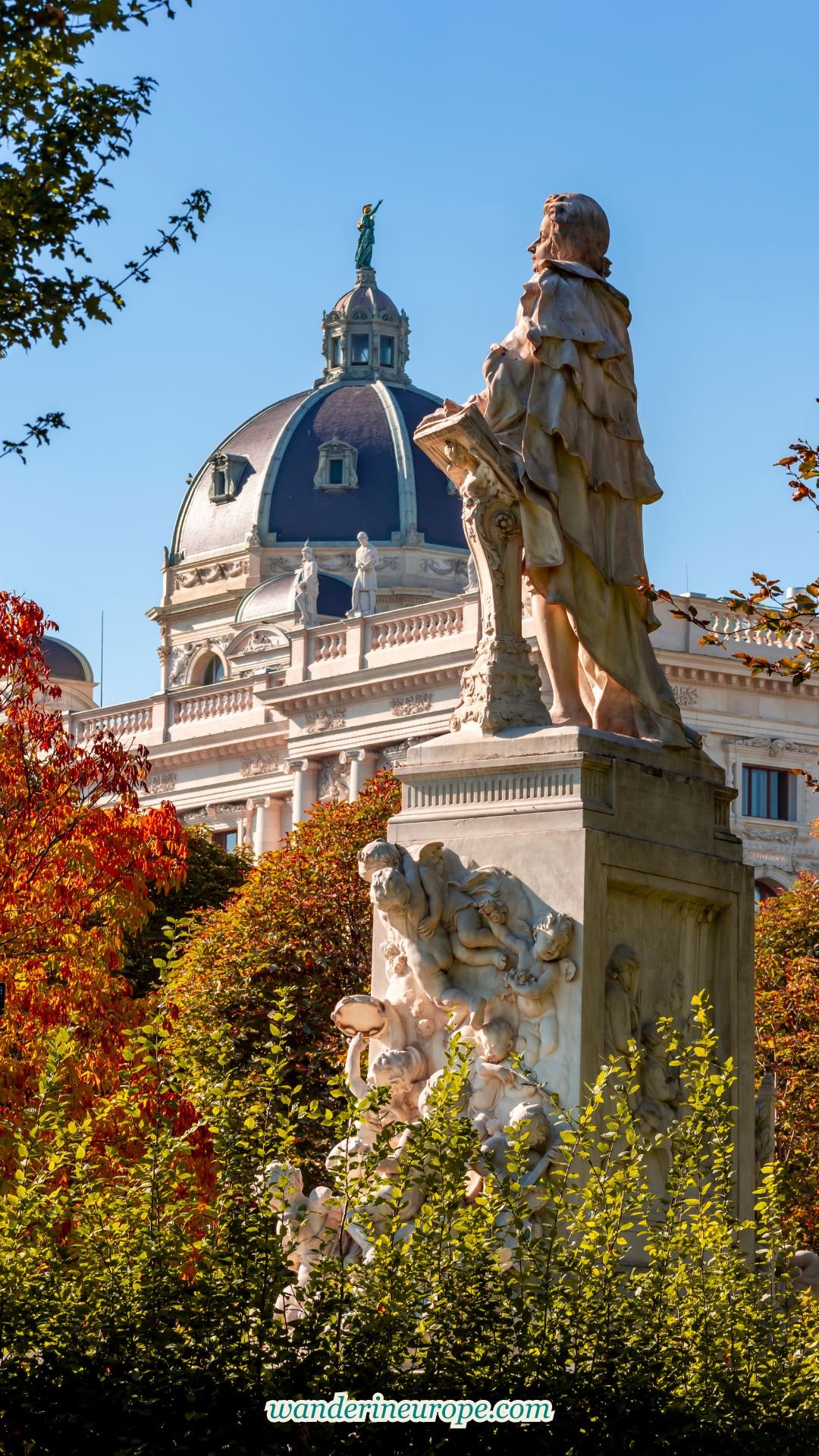
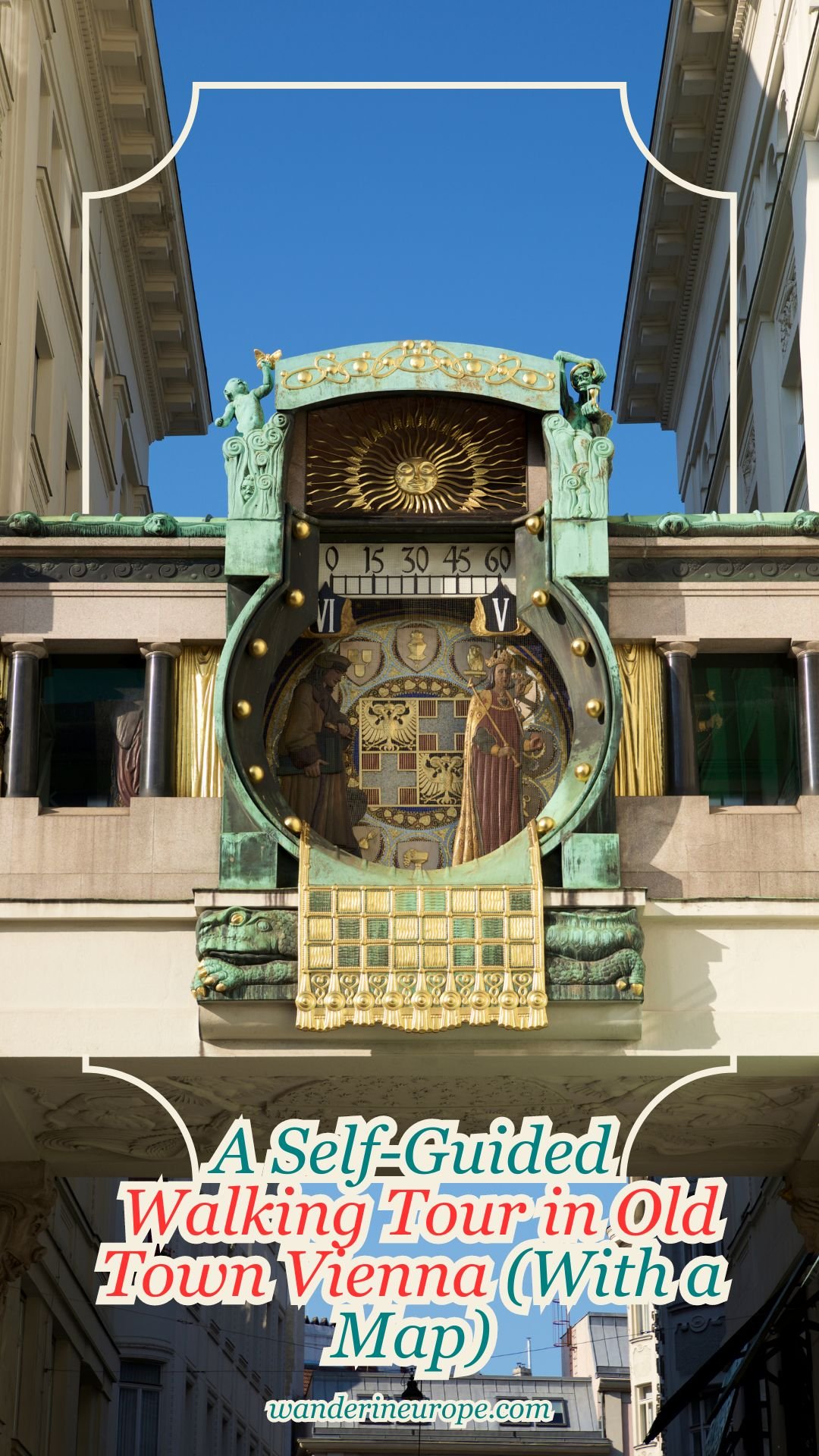
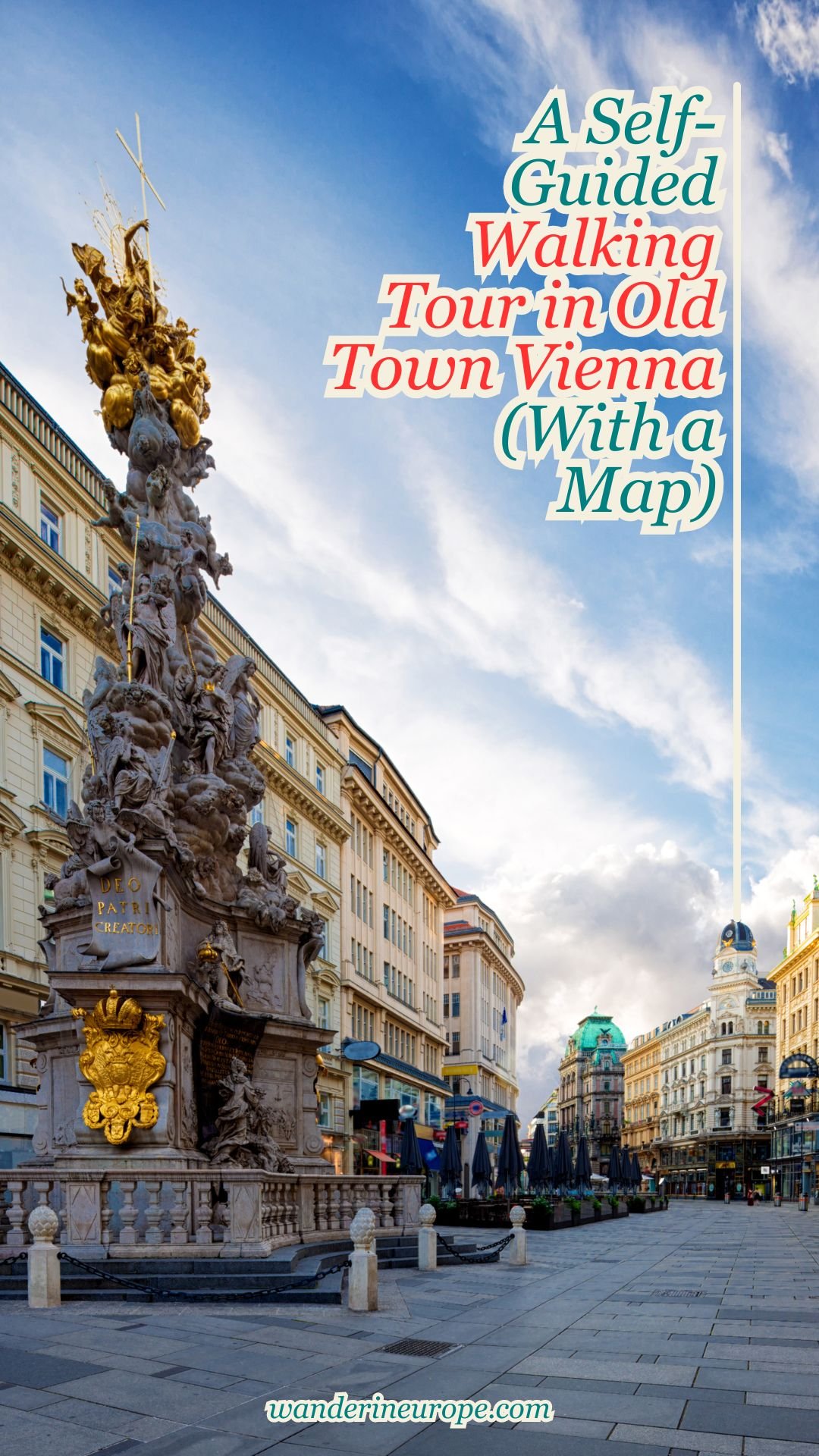
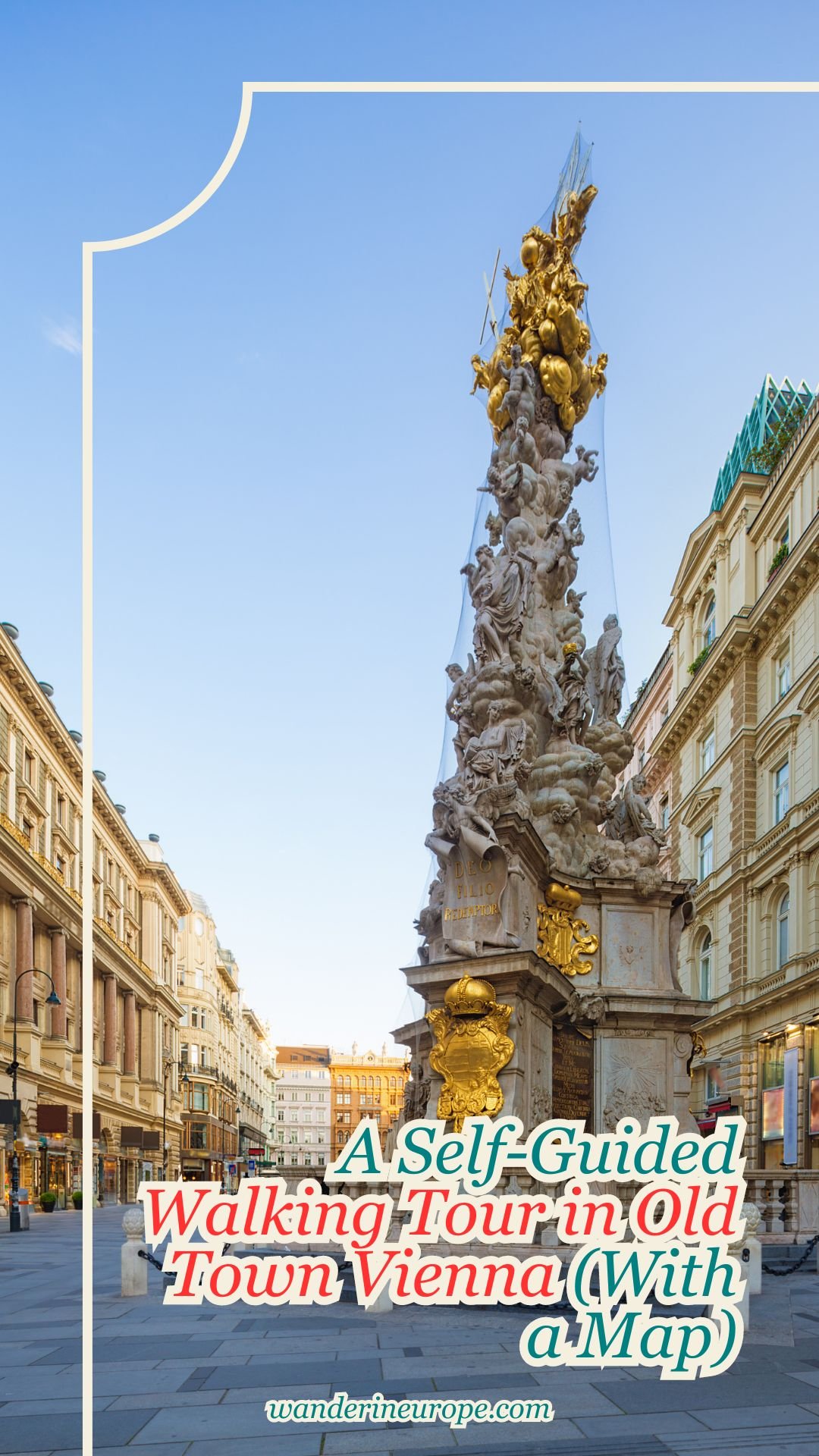
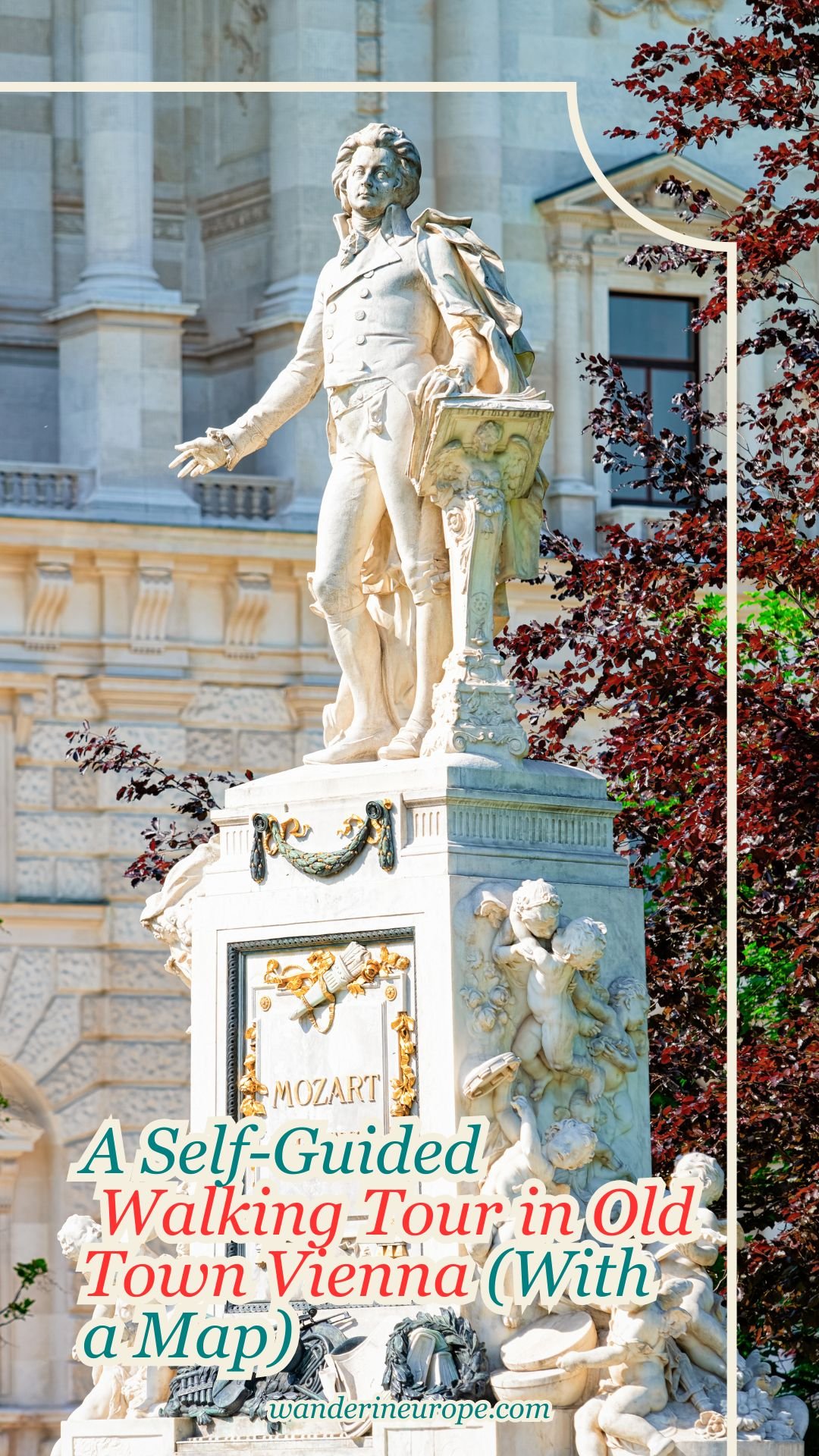
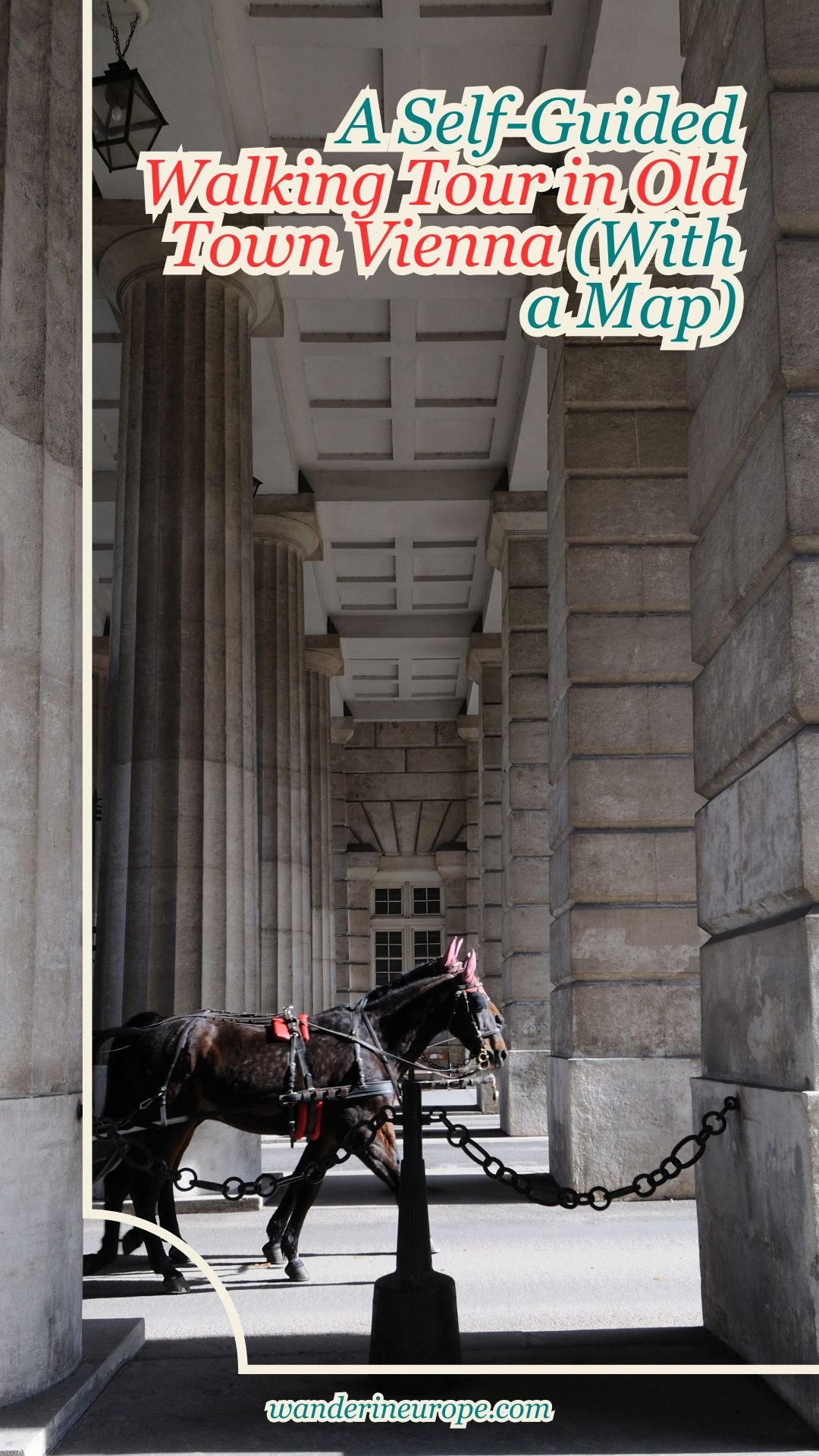
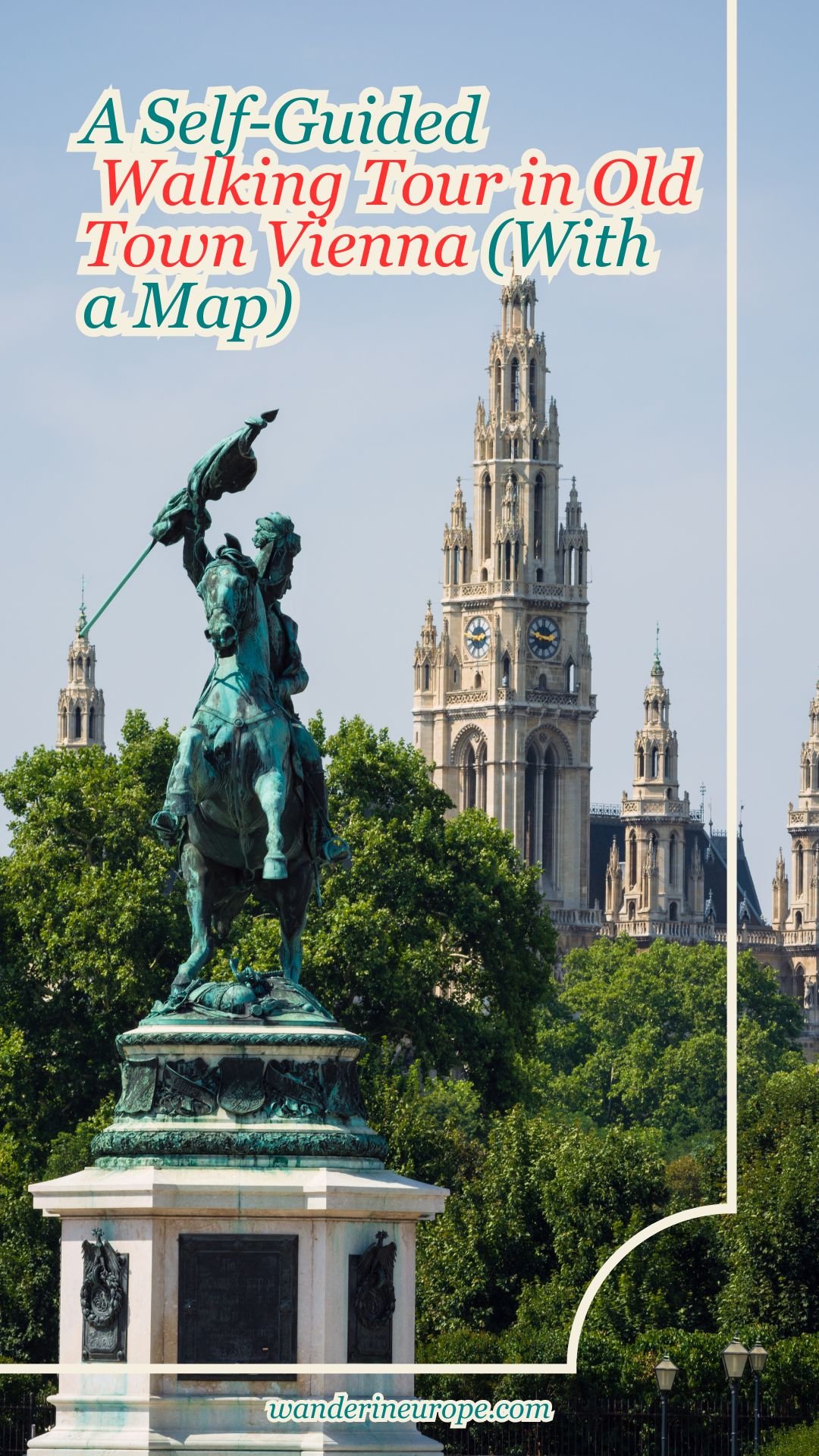
Pin this to save it for later or bookmark it to read anytime.

